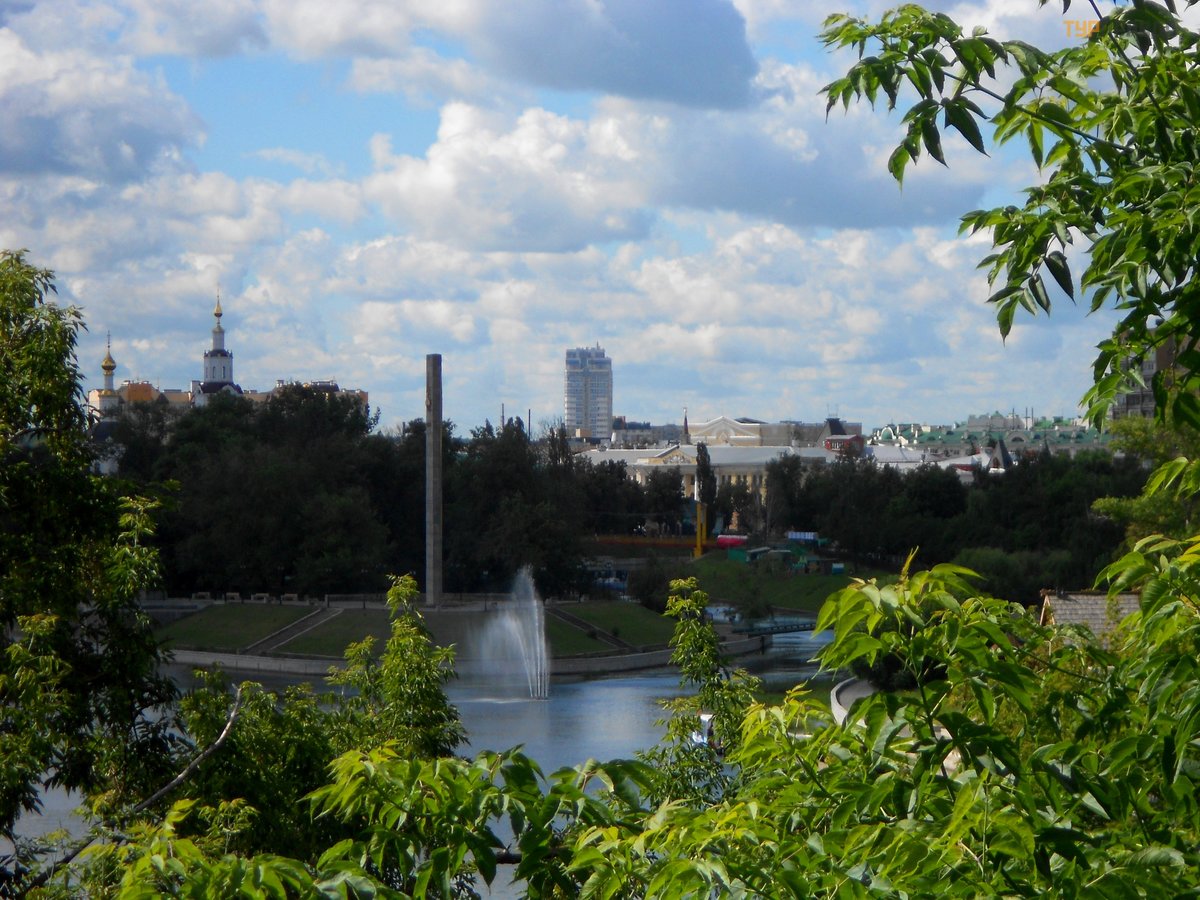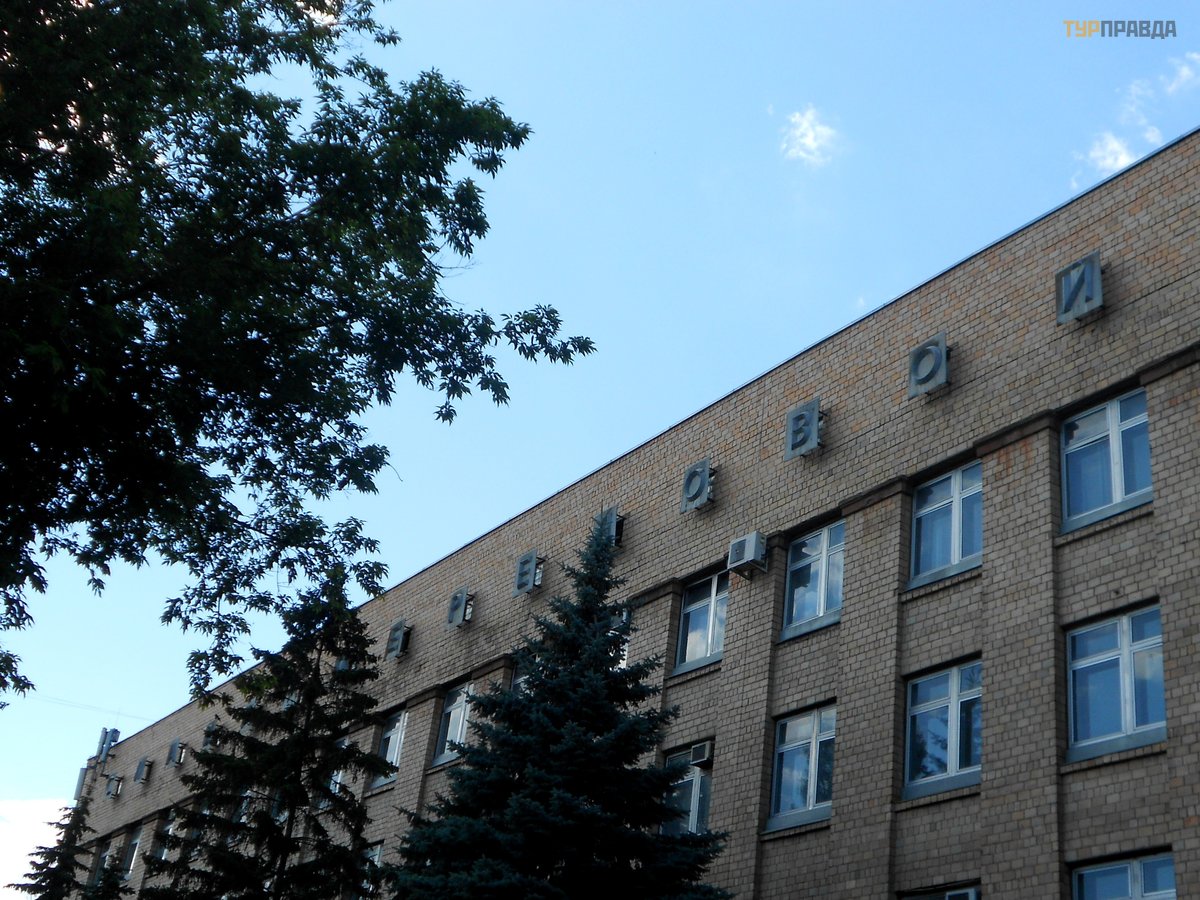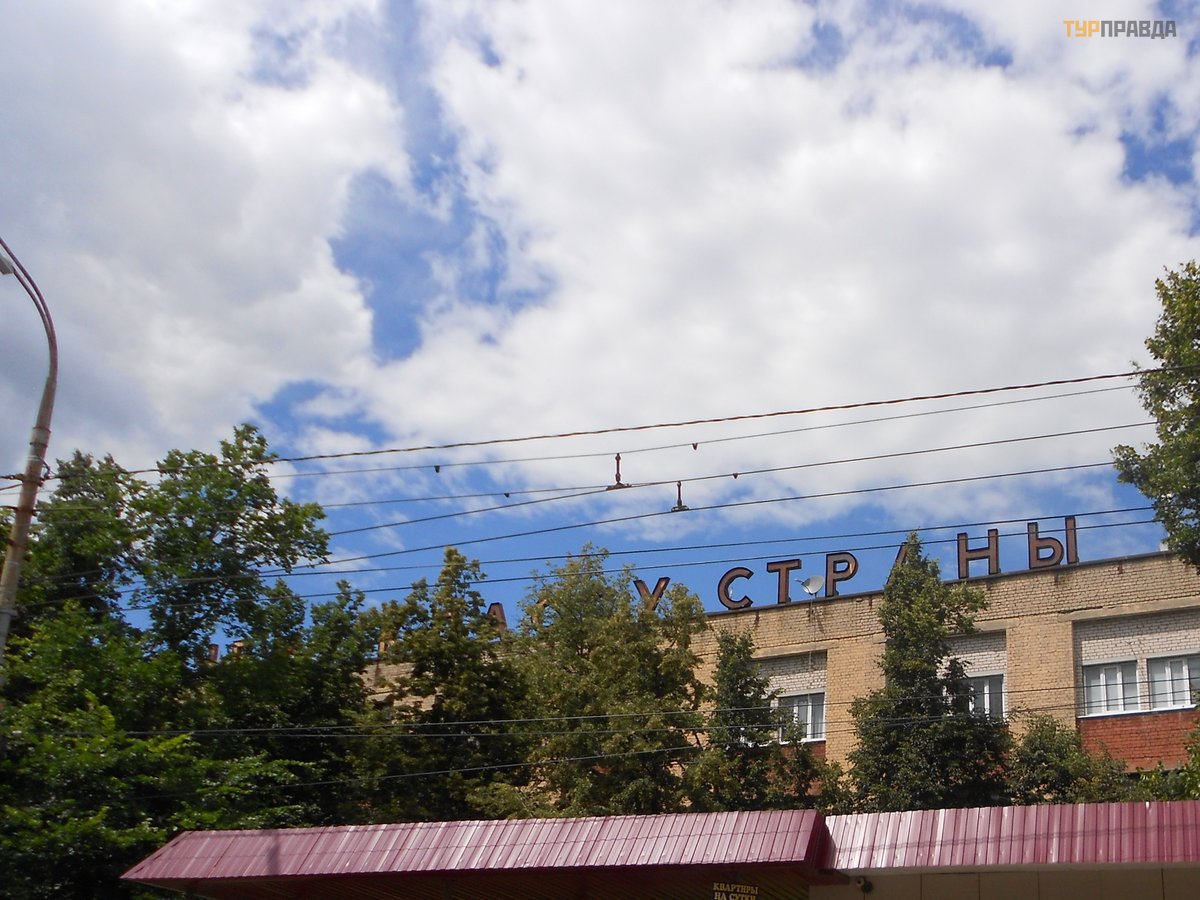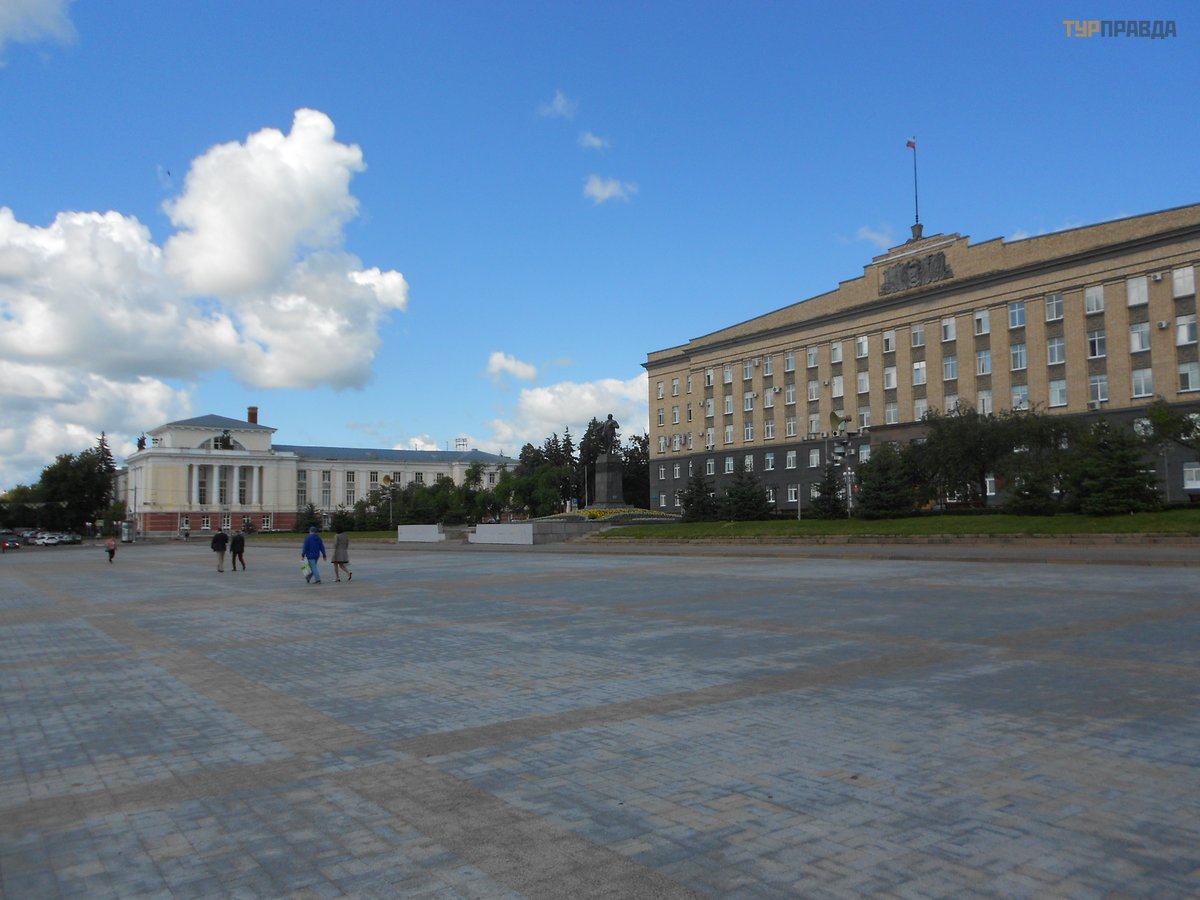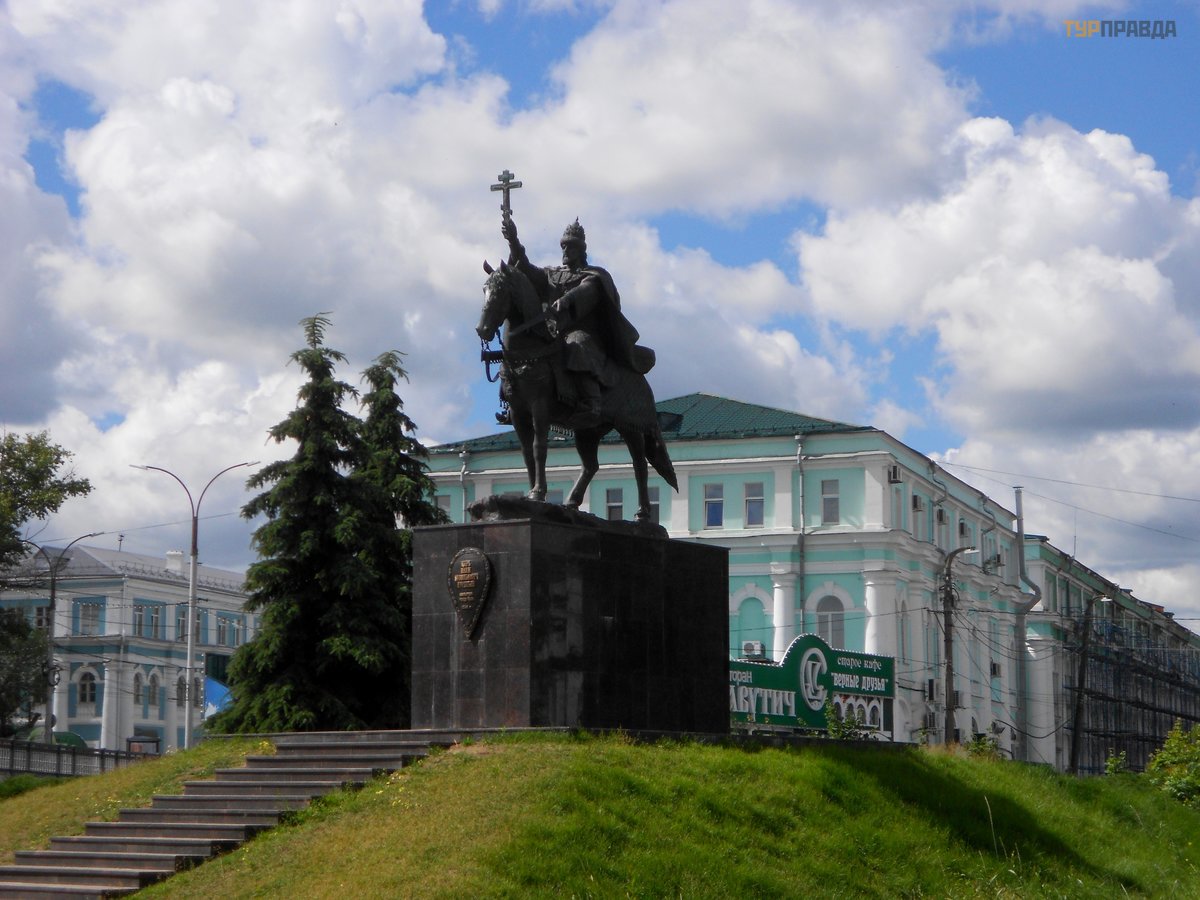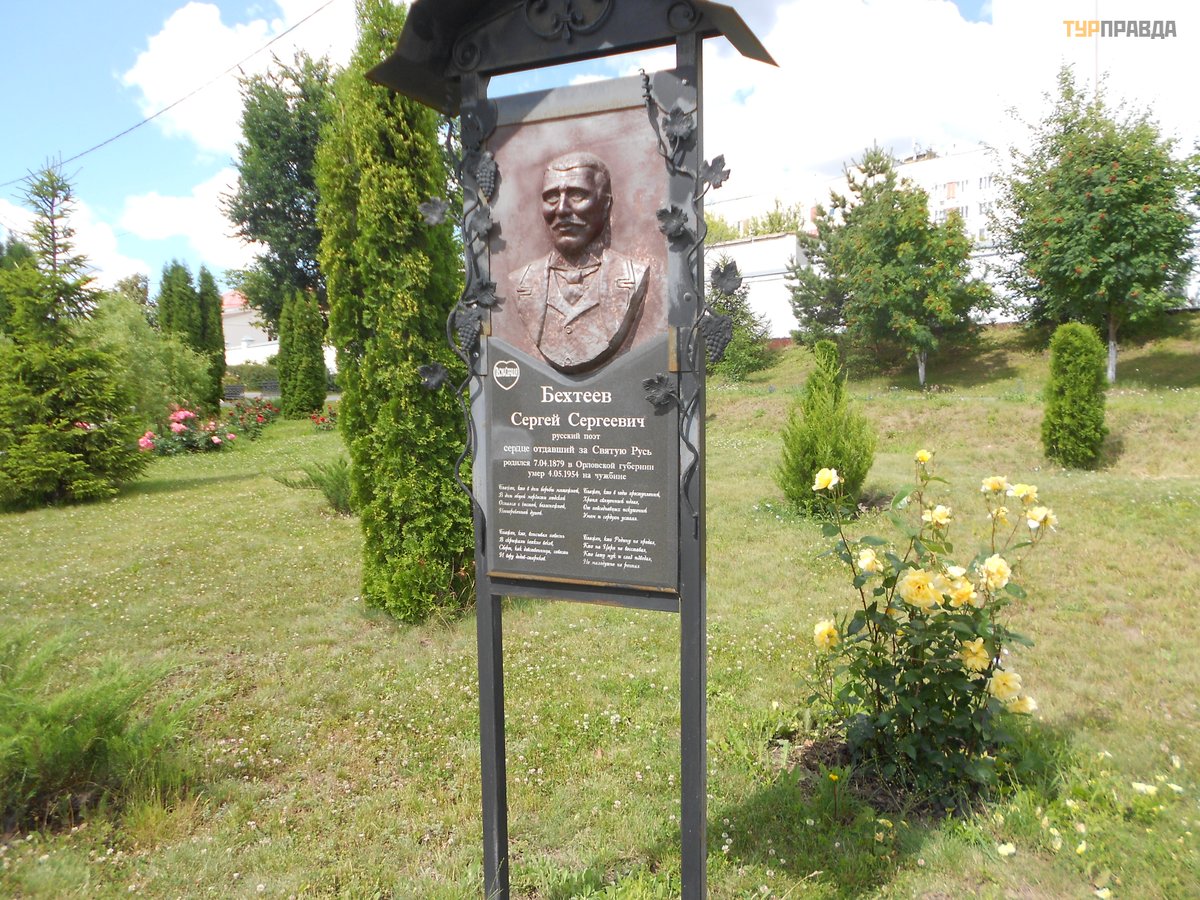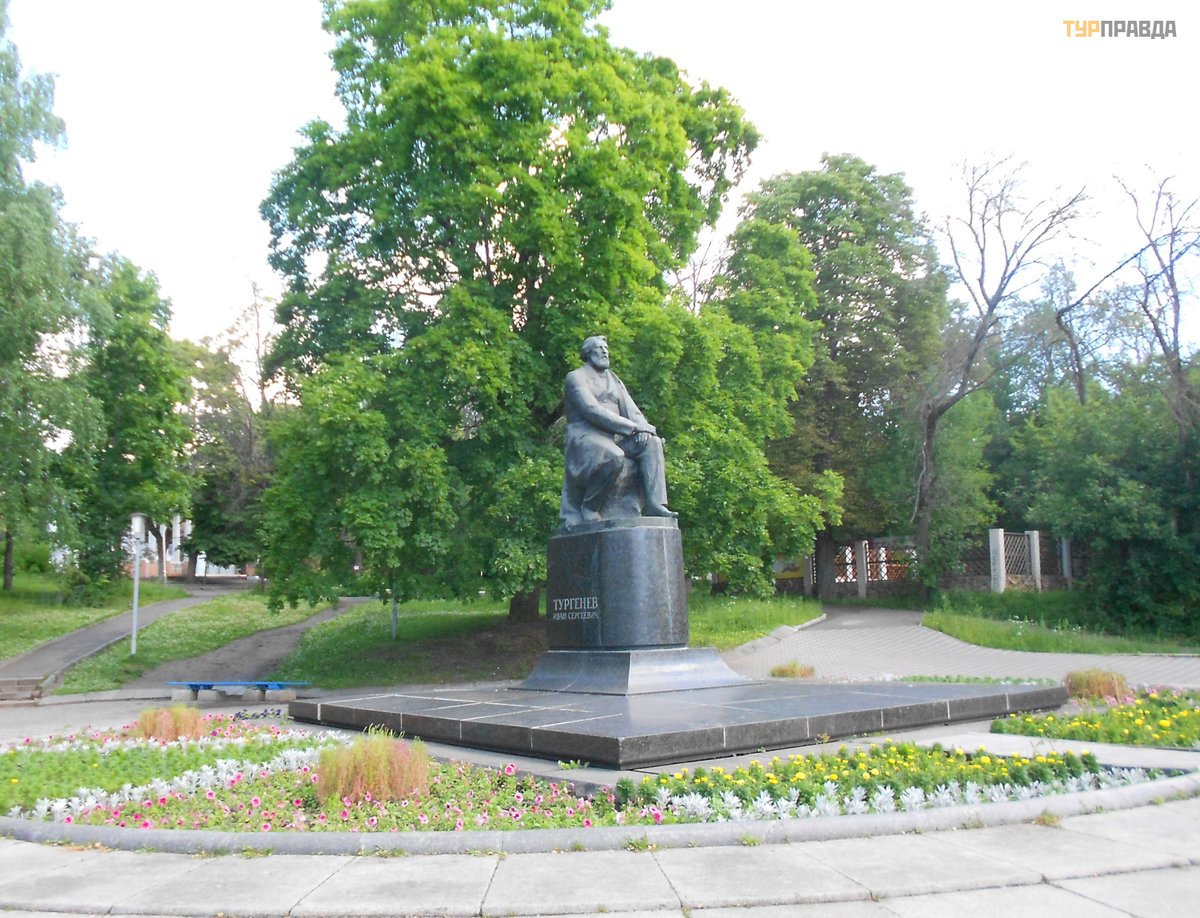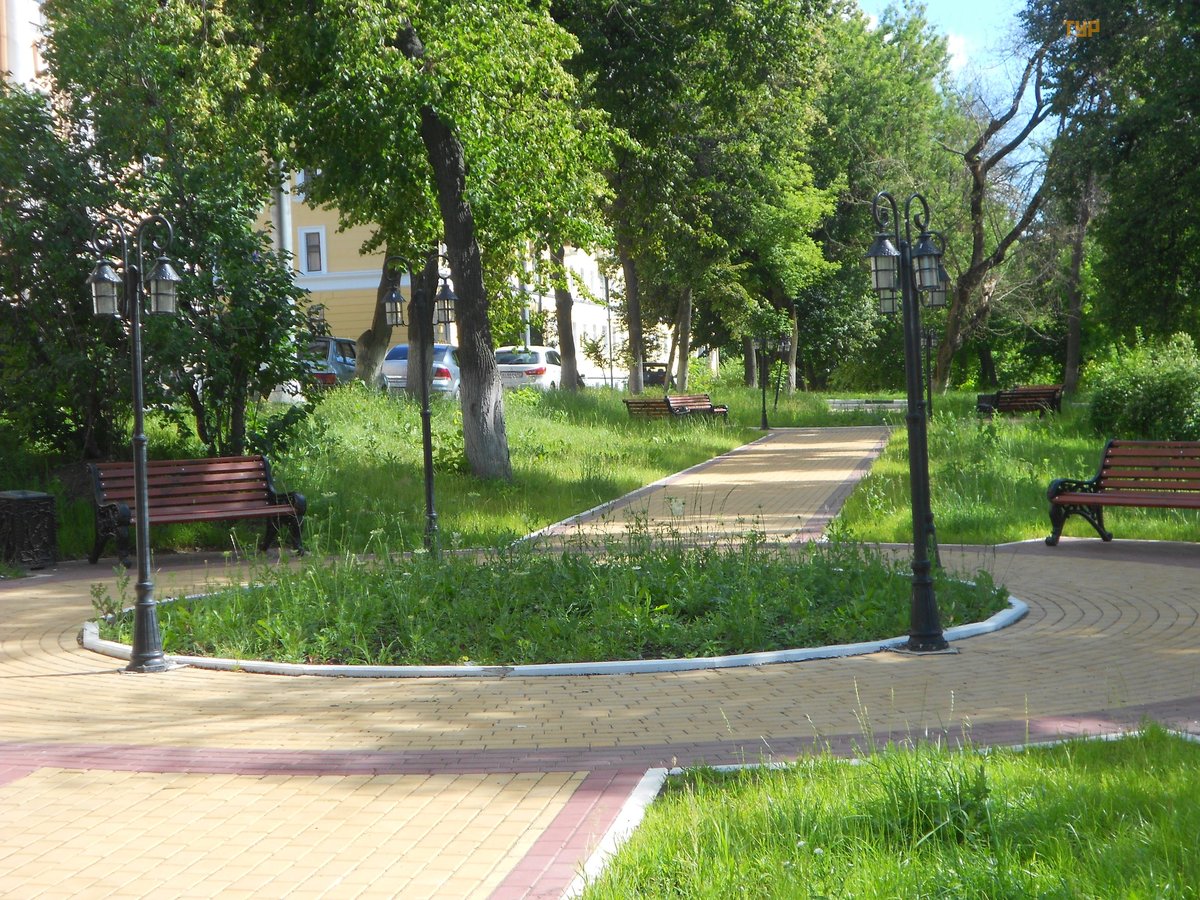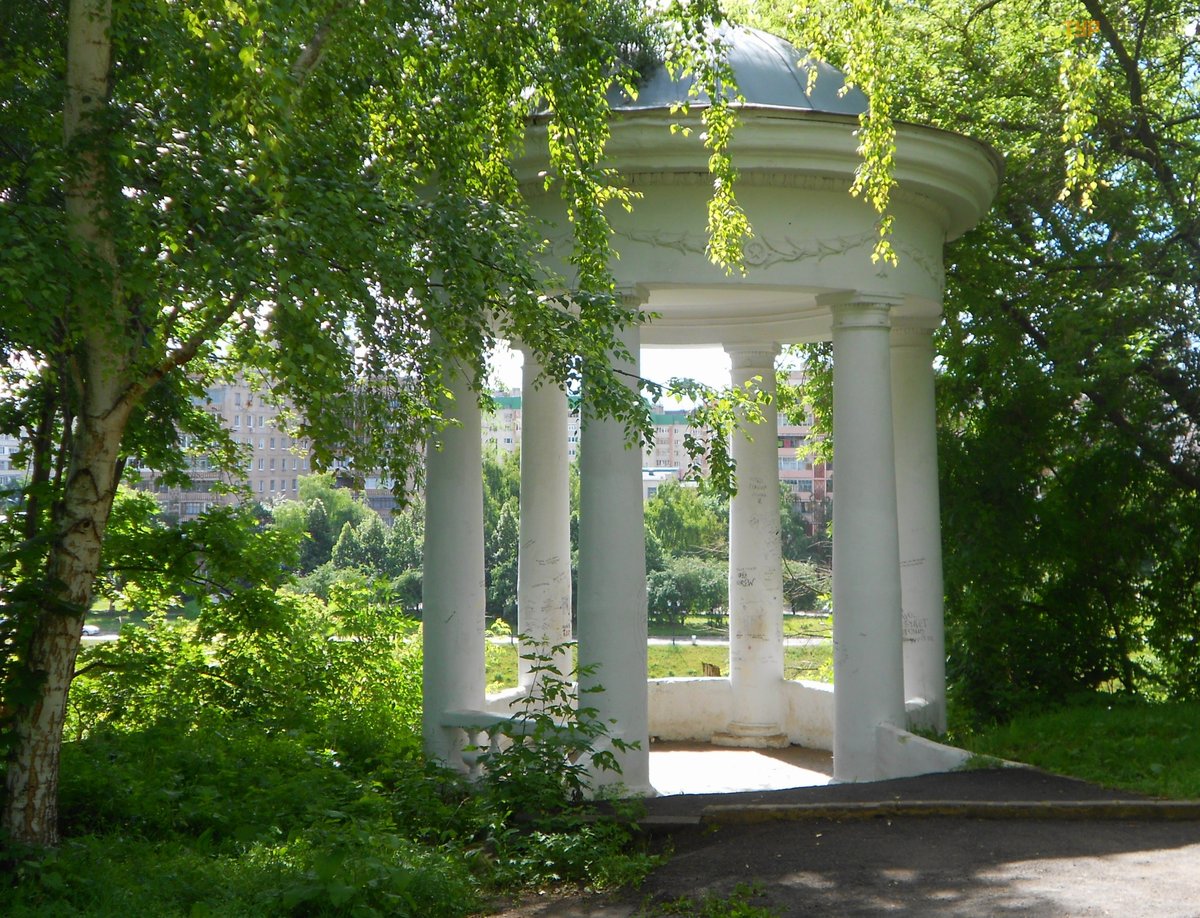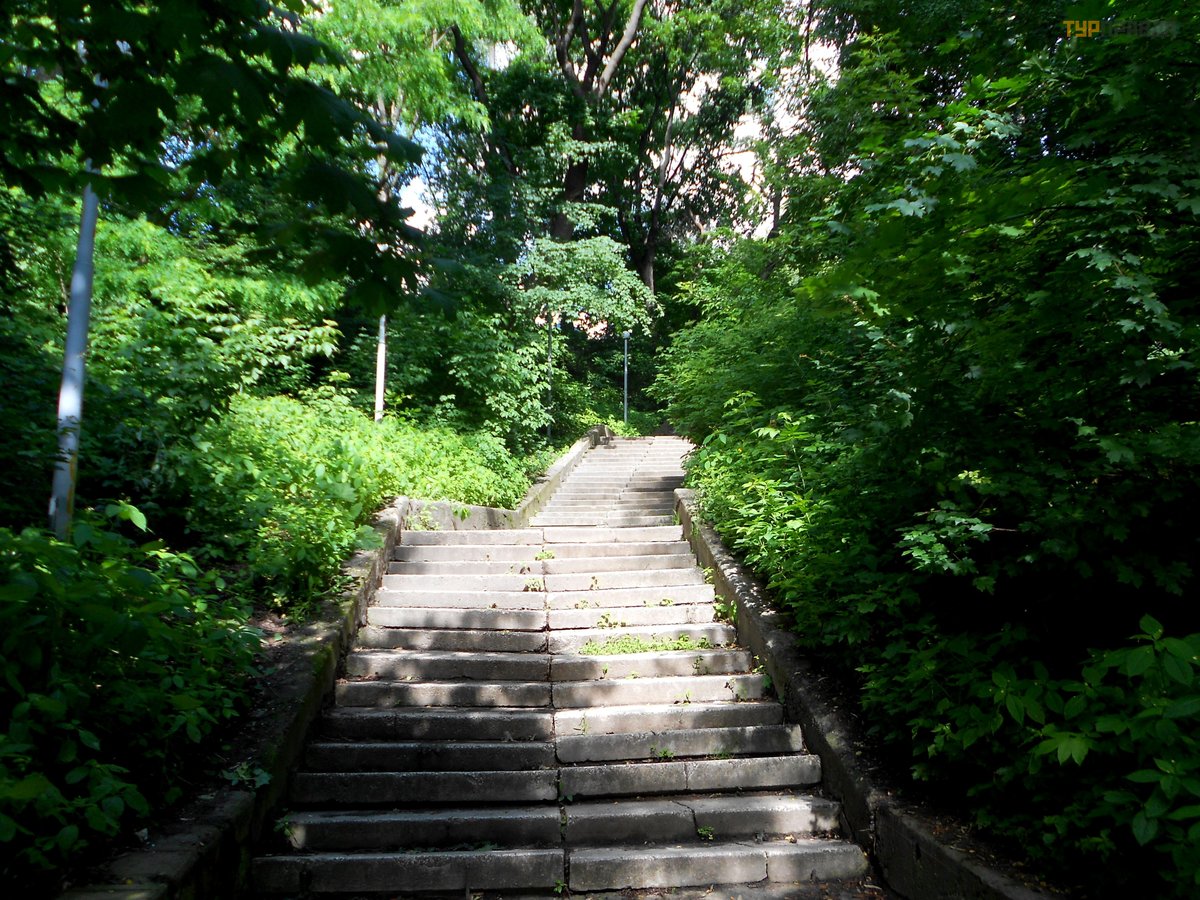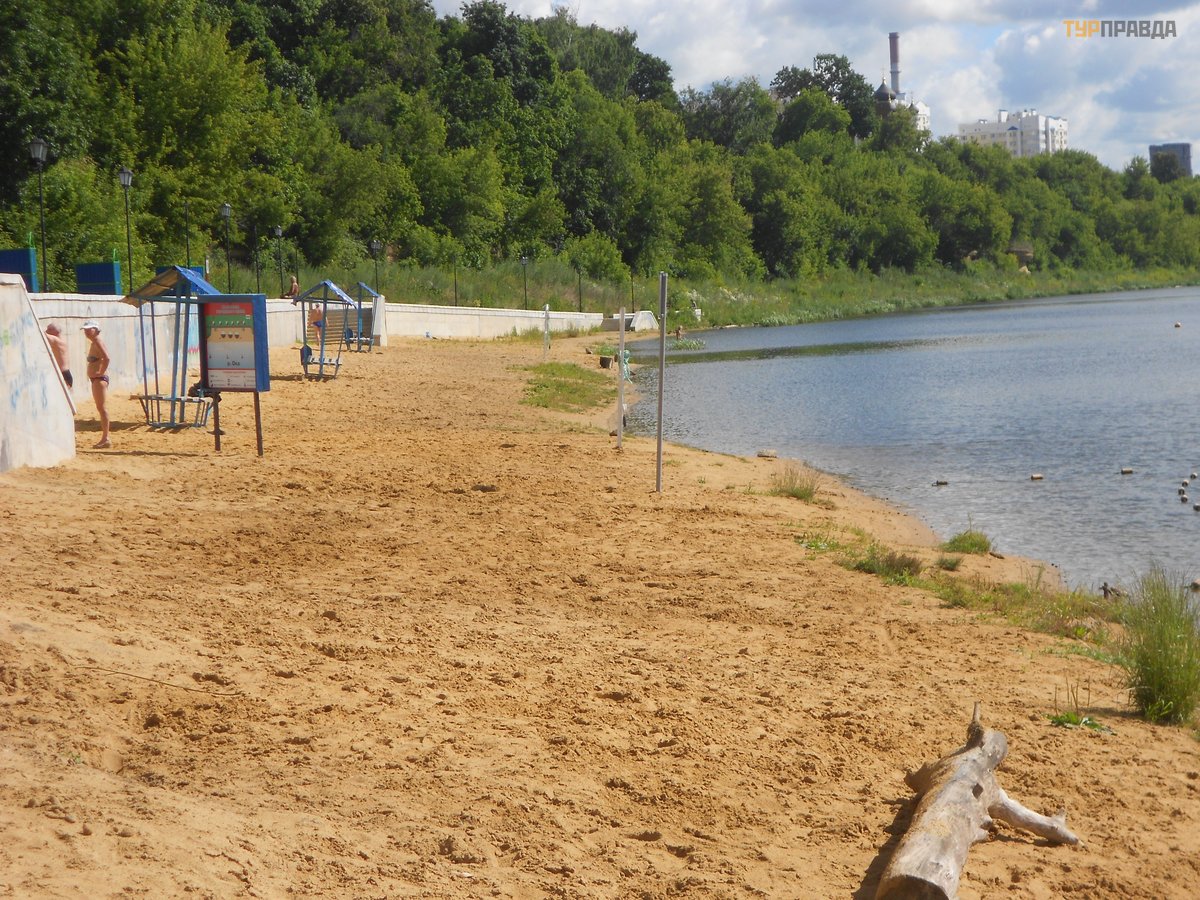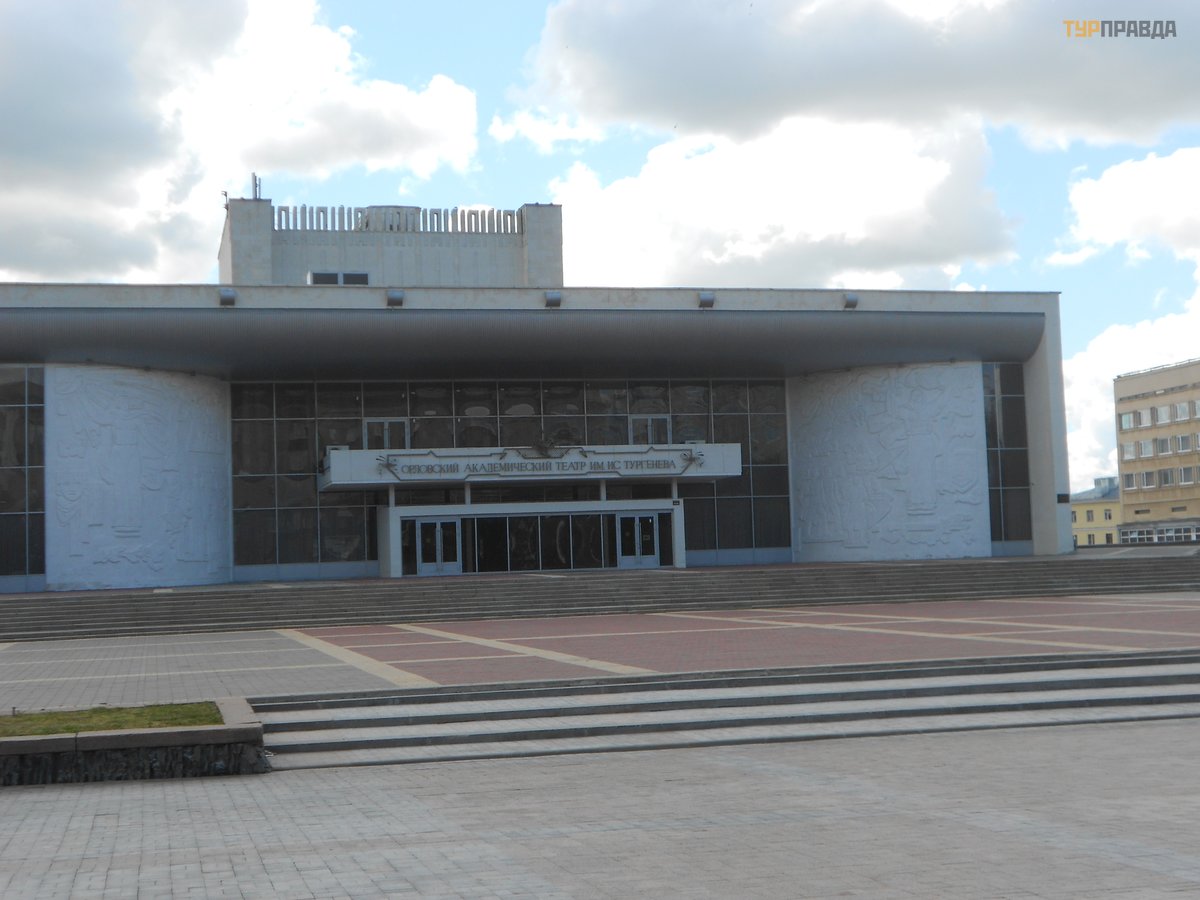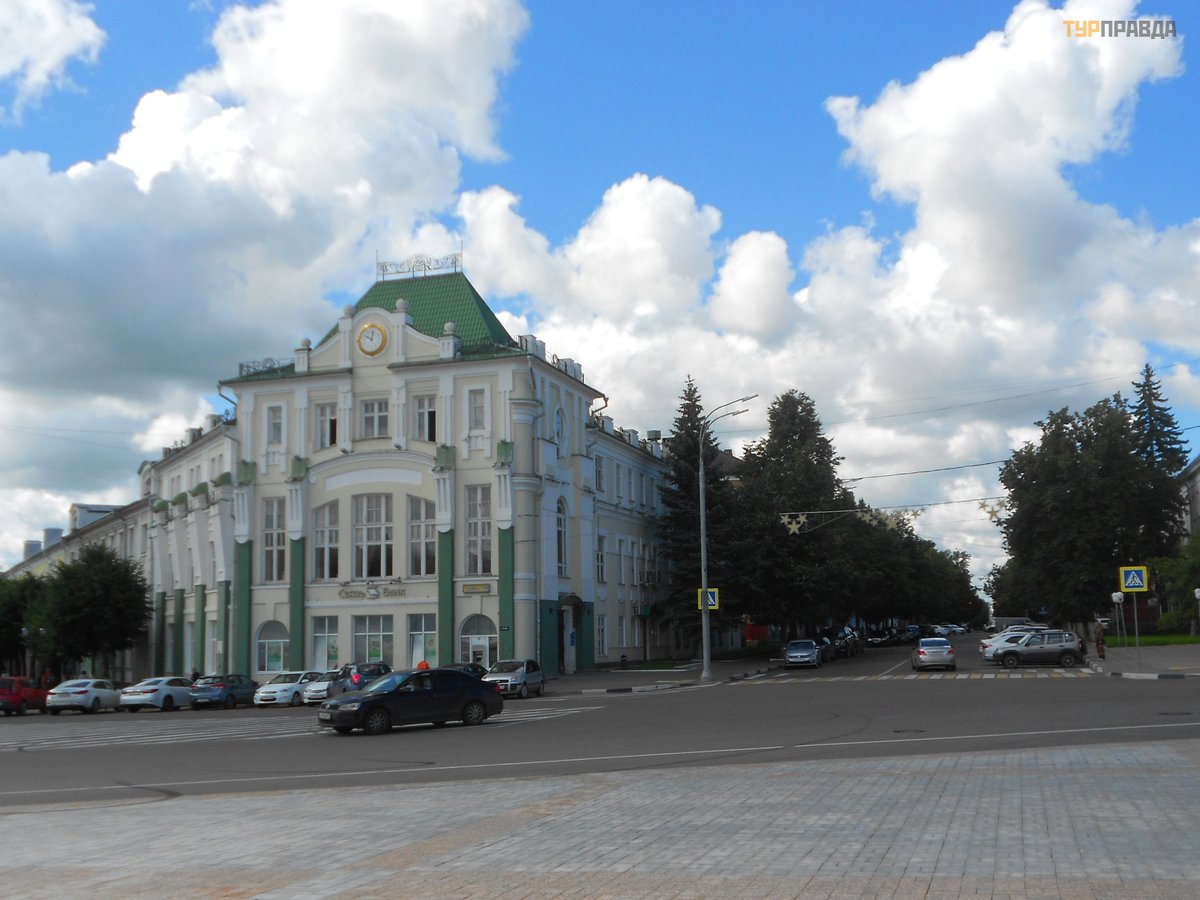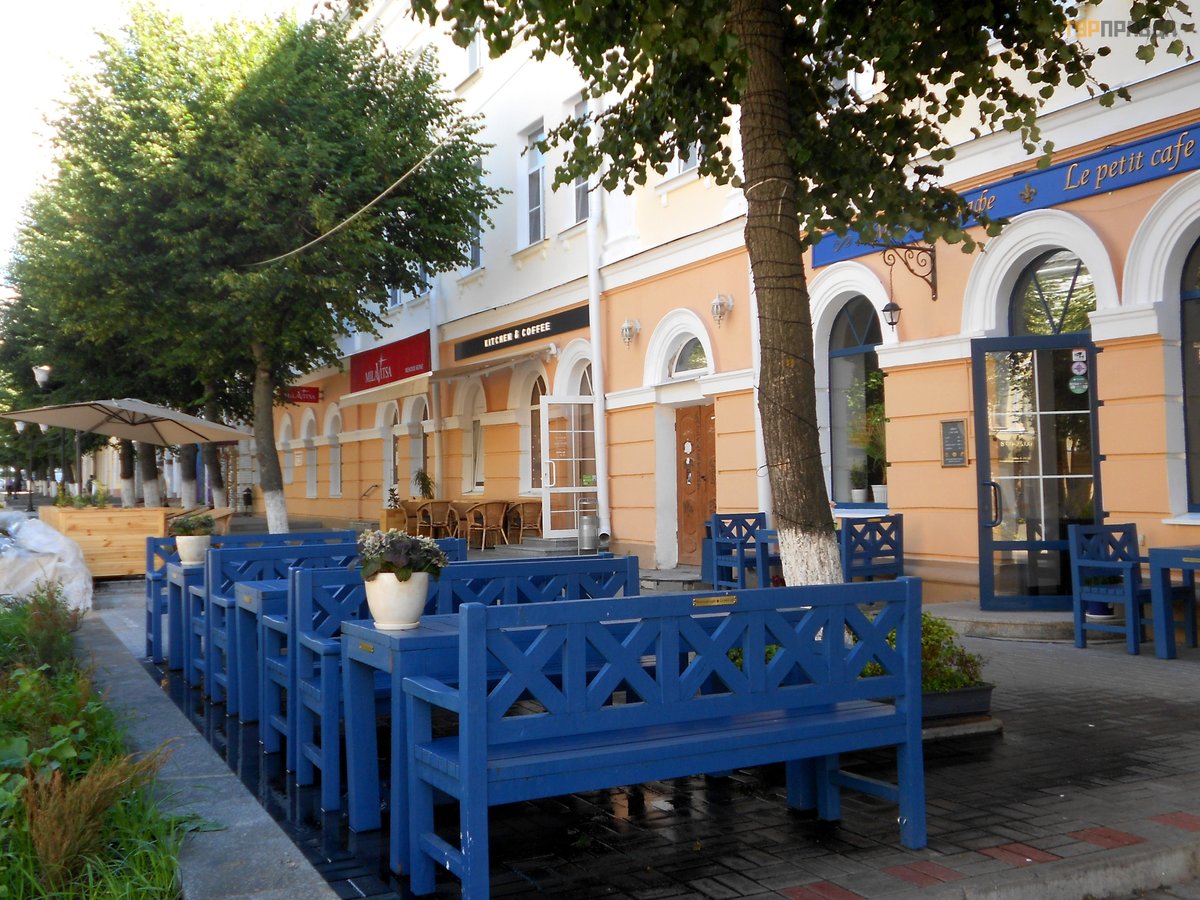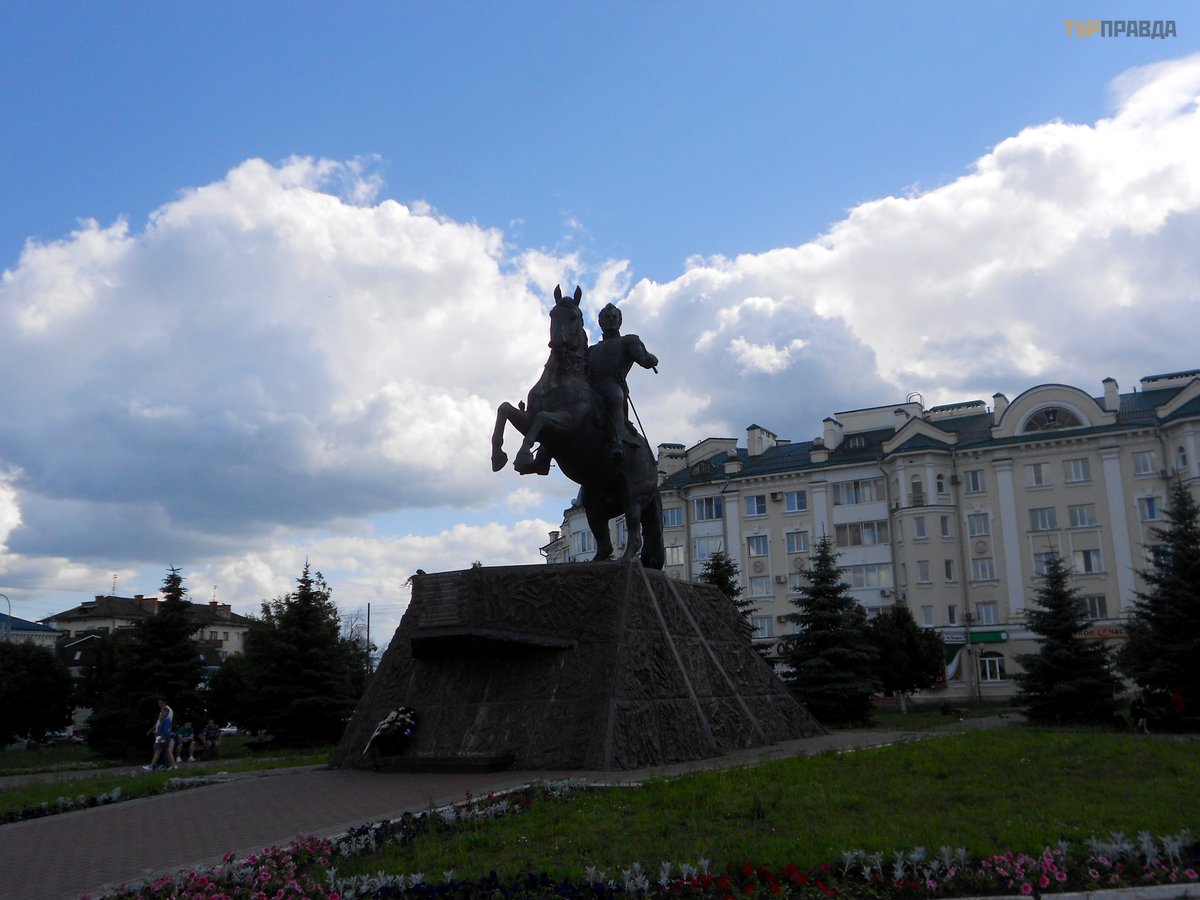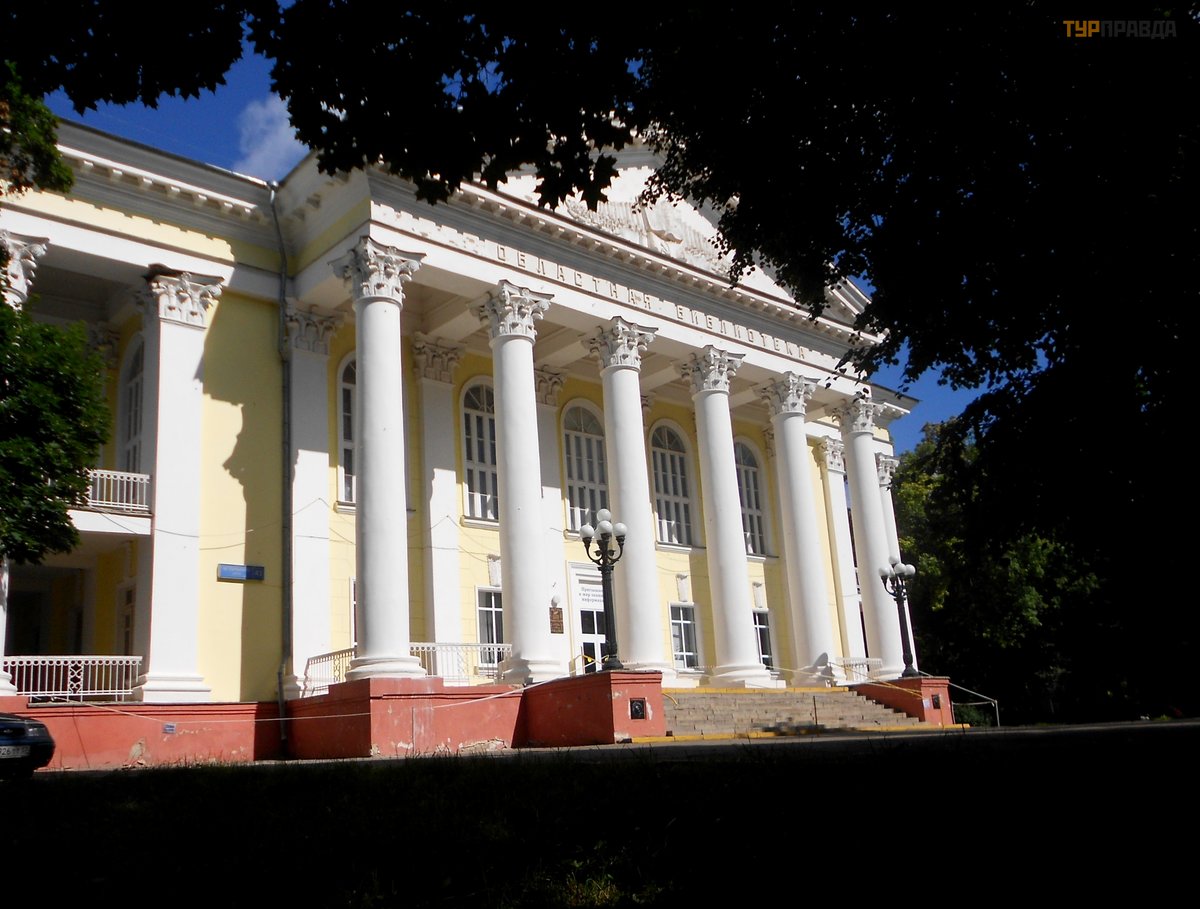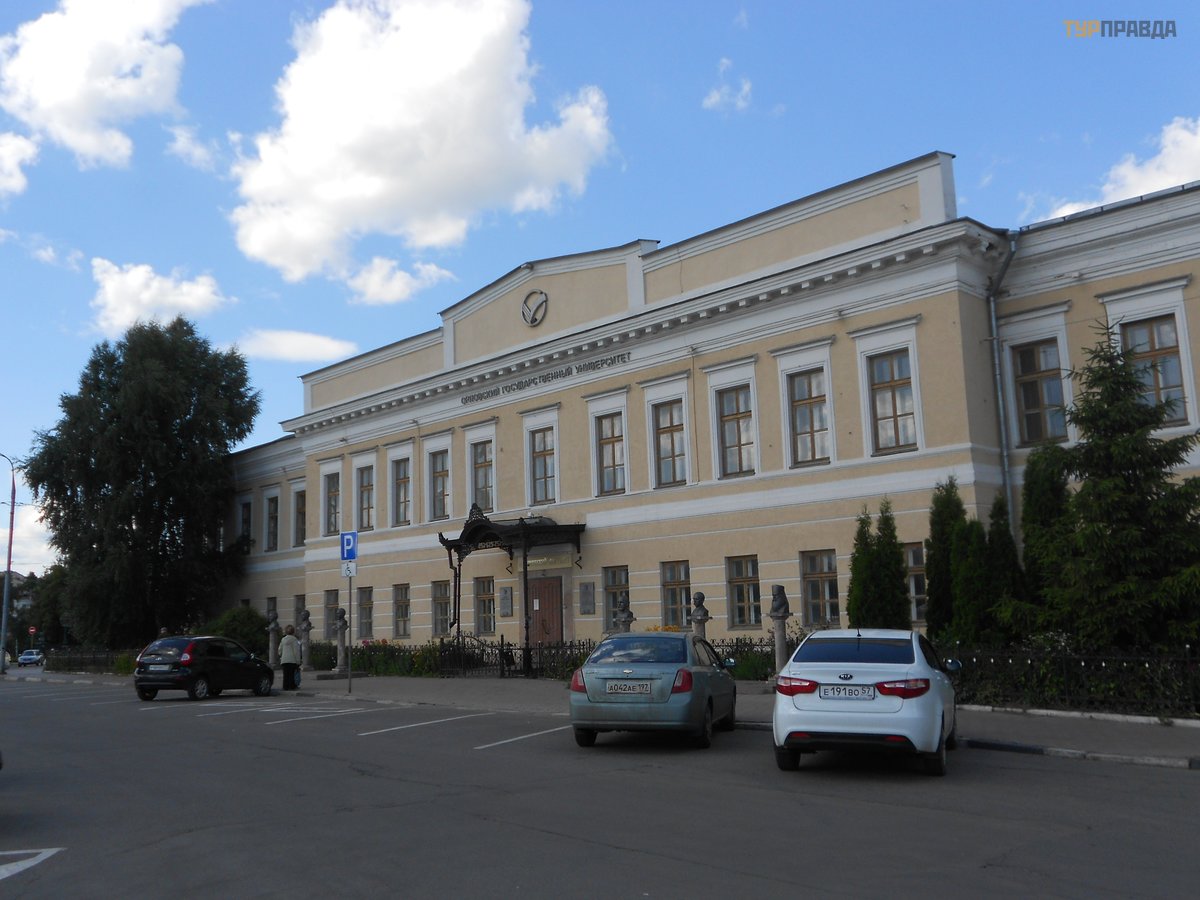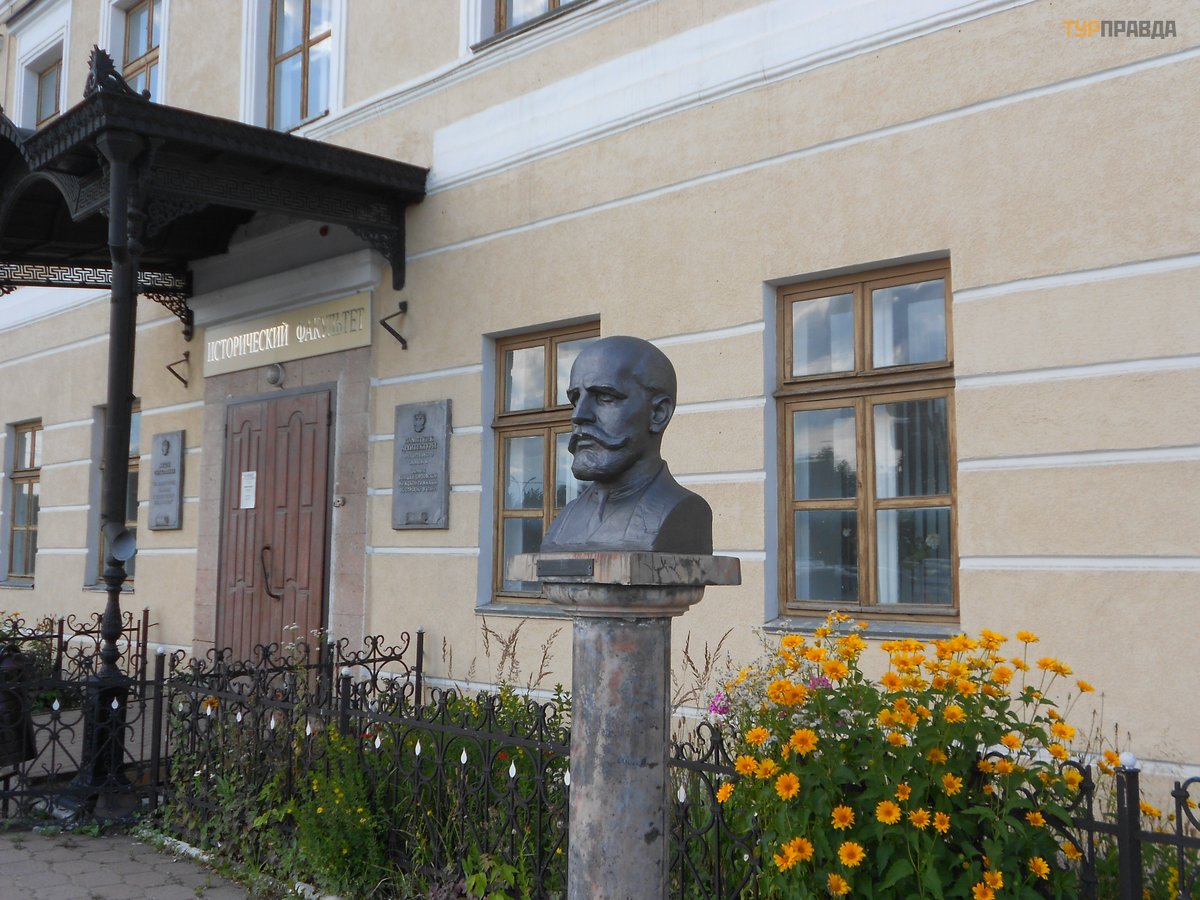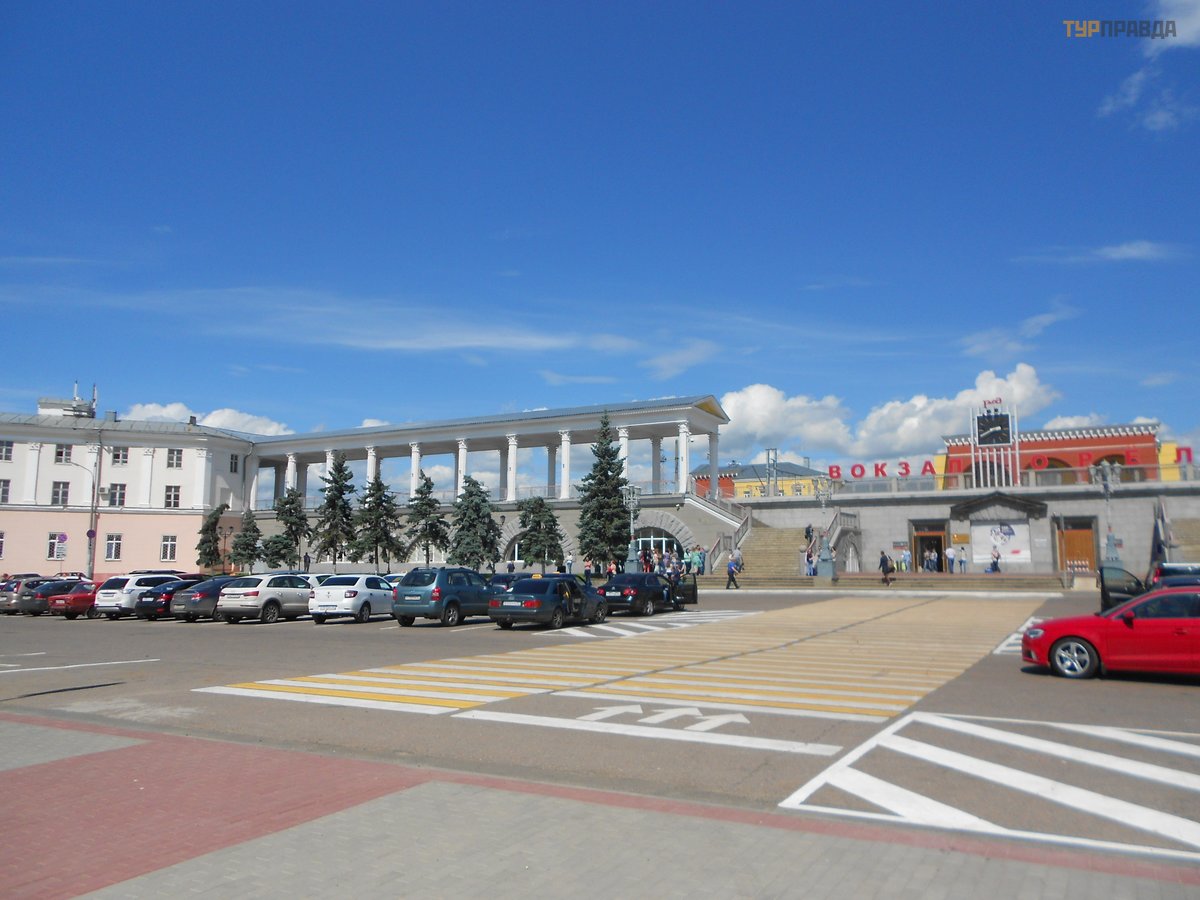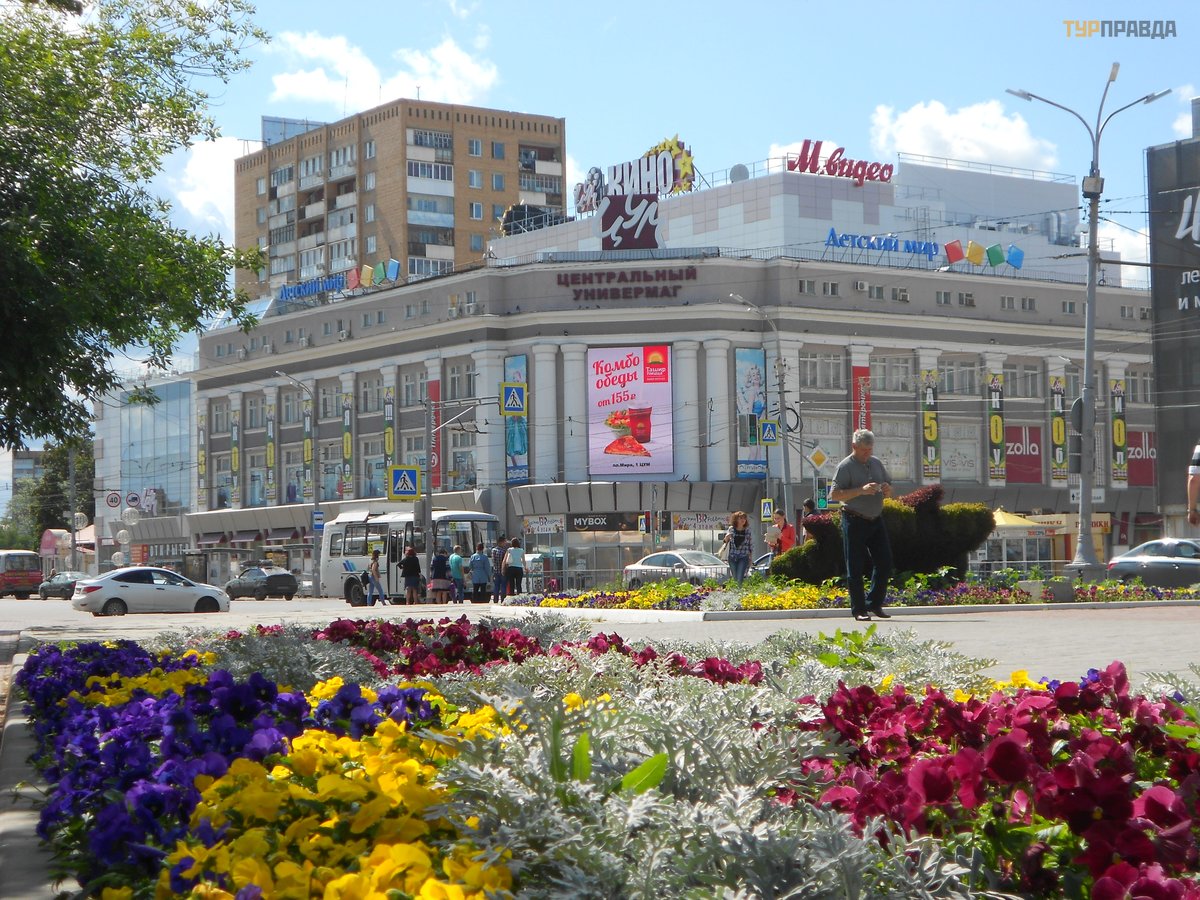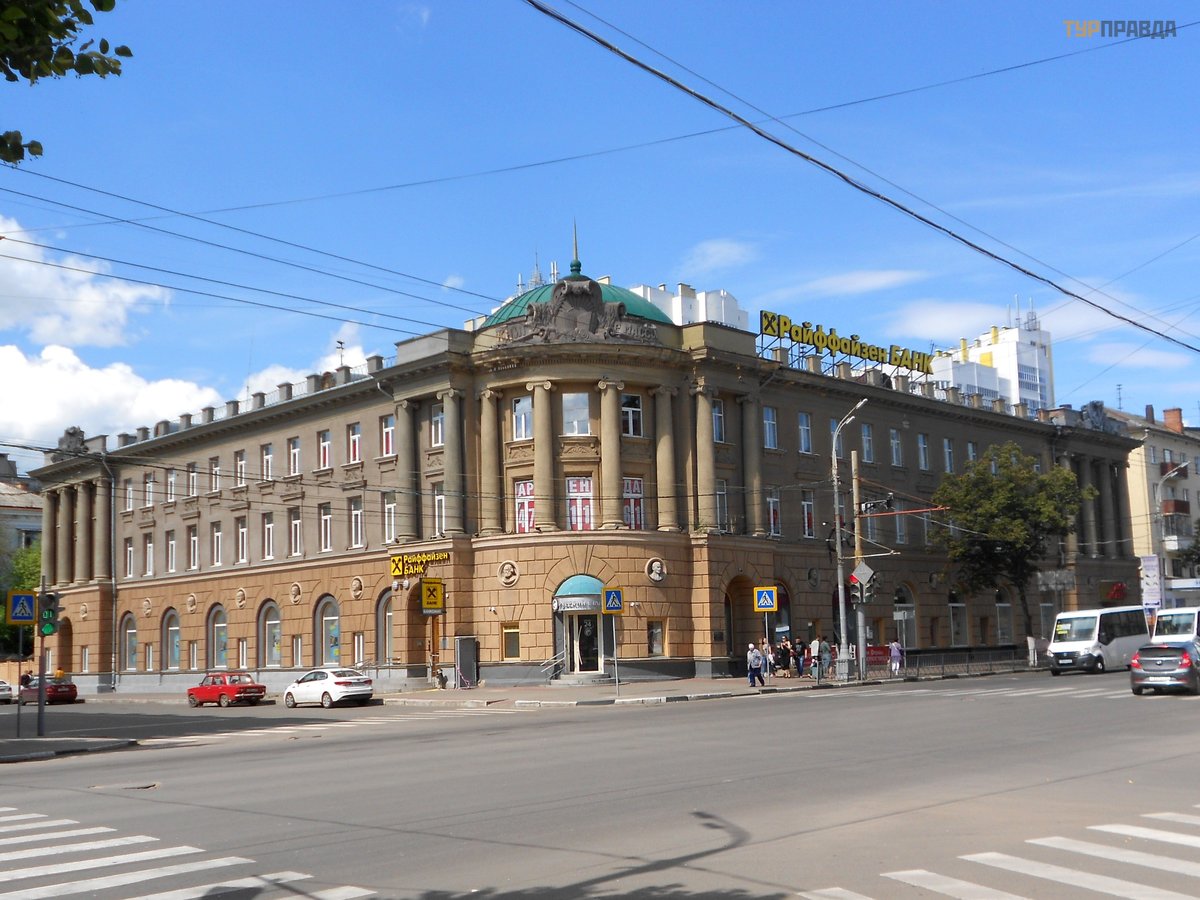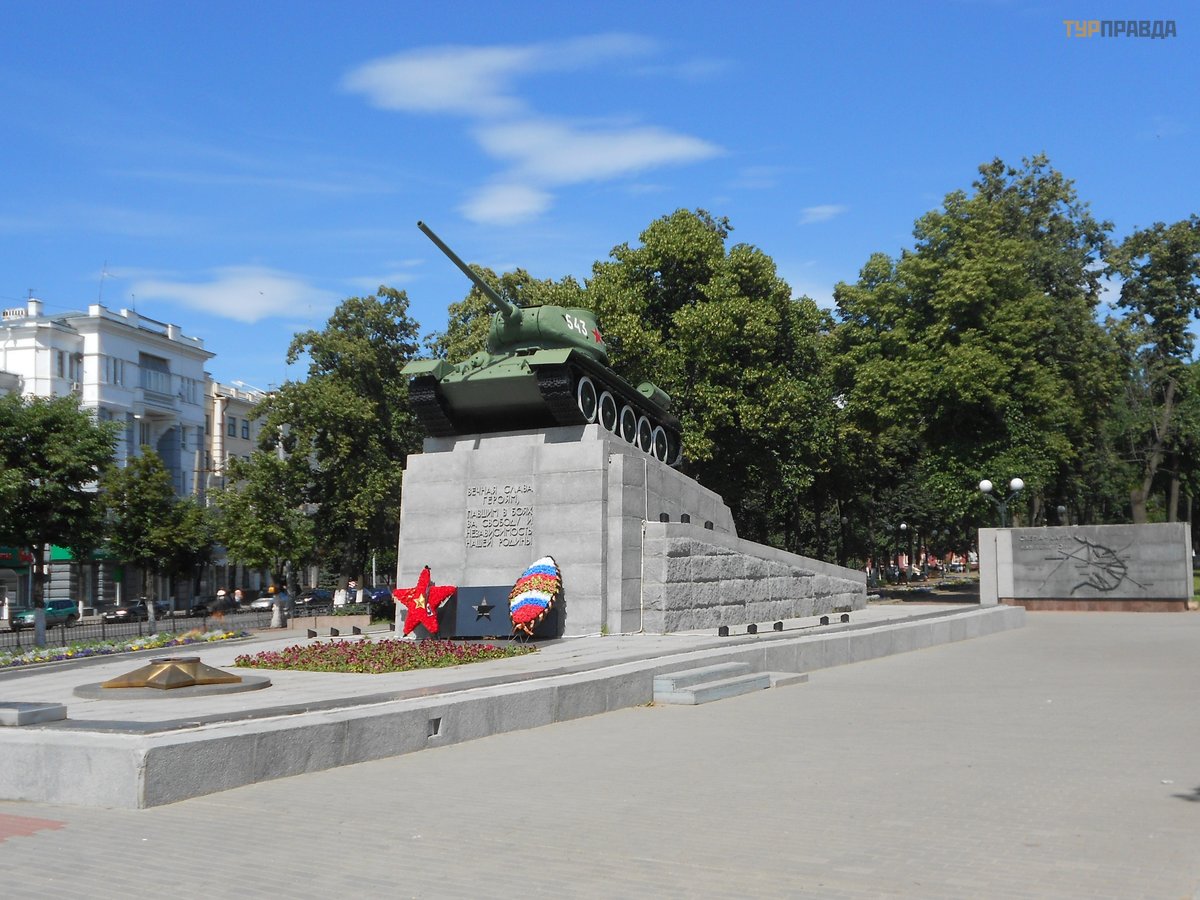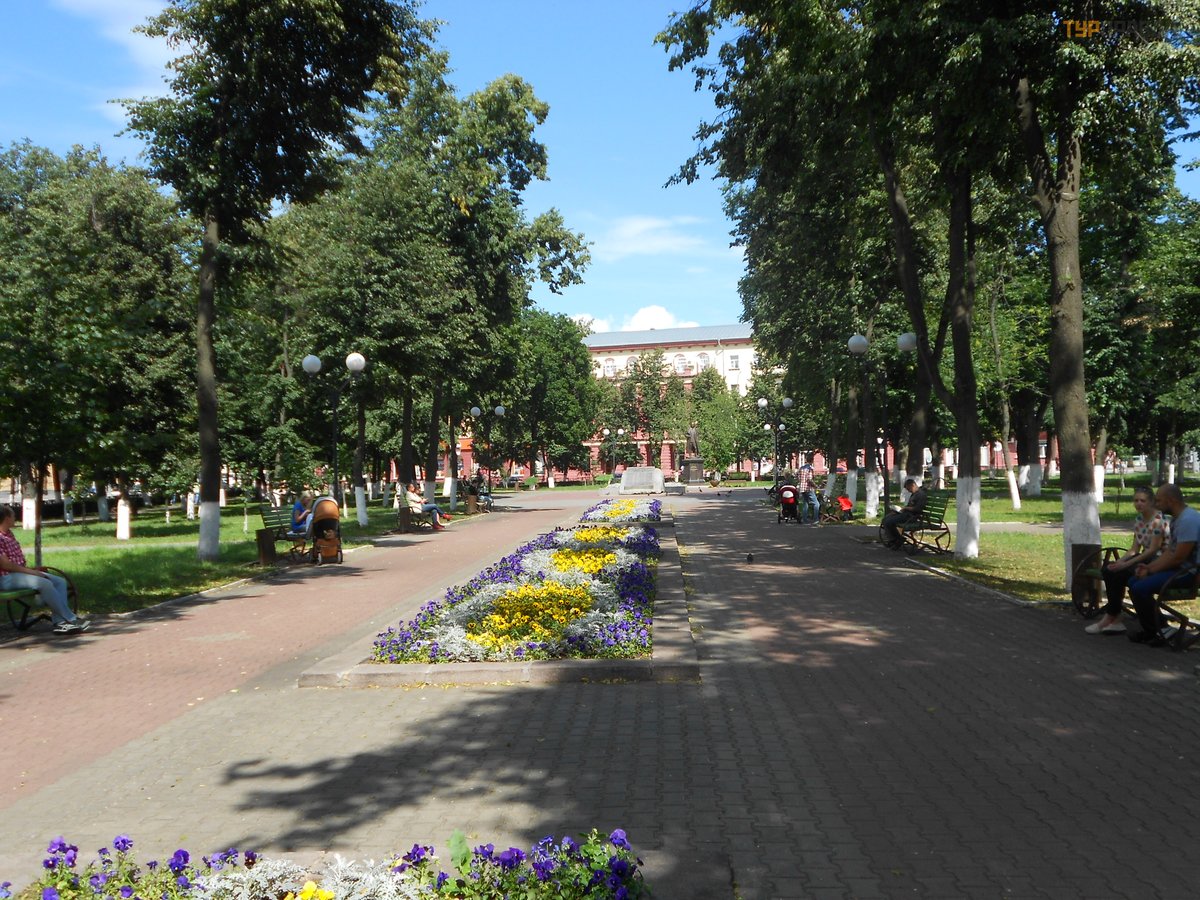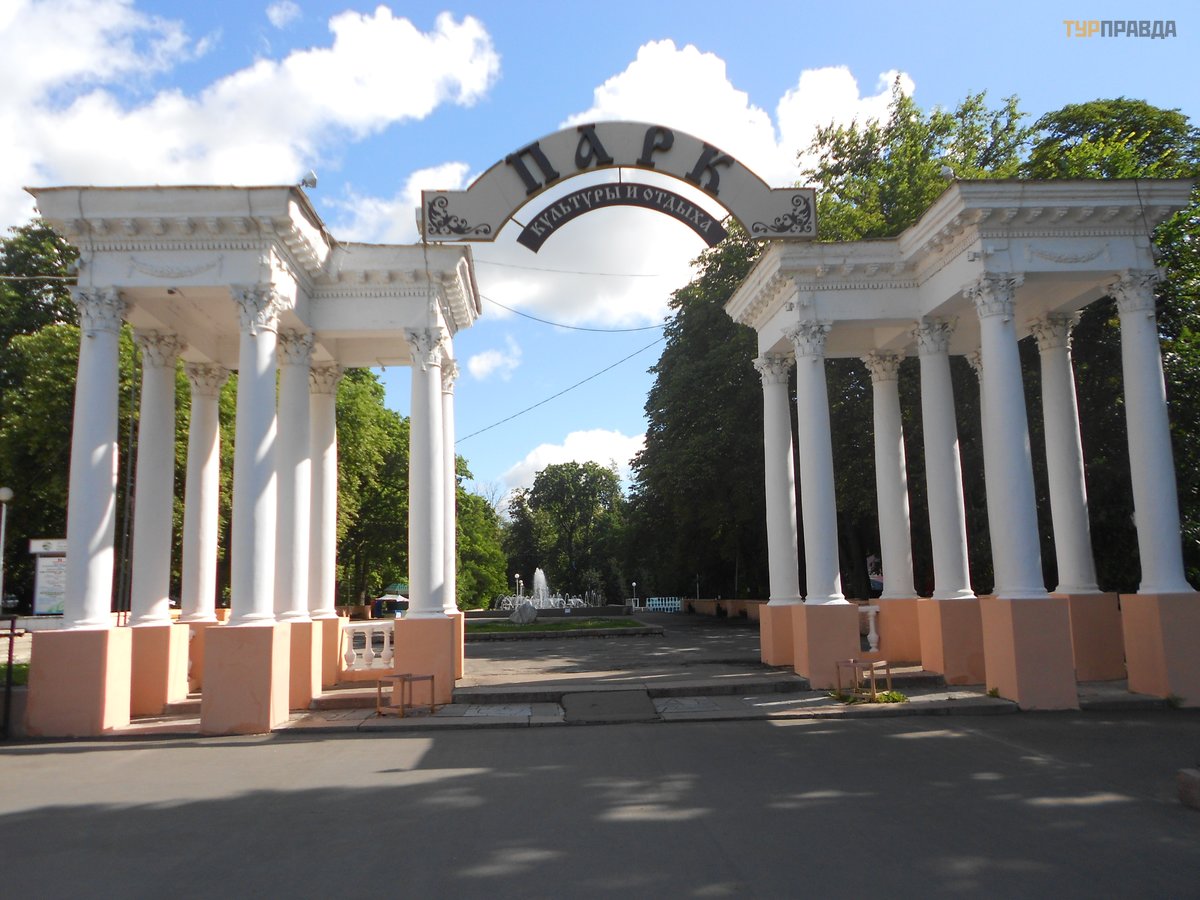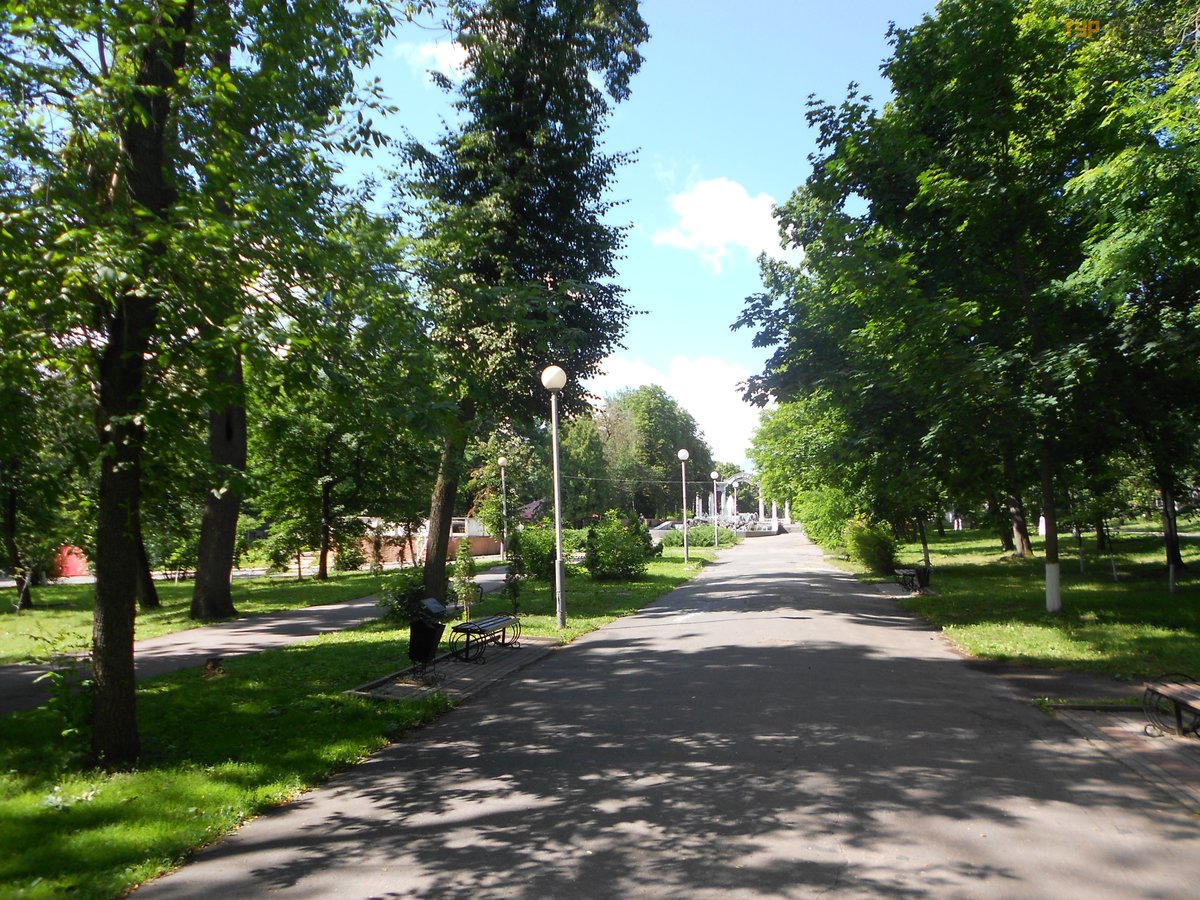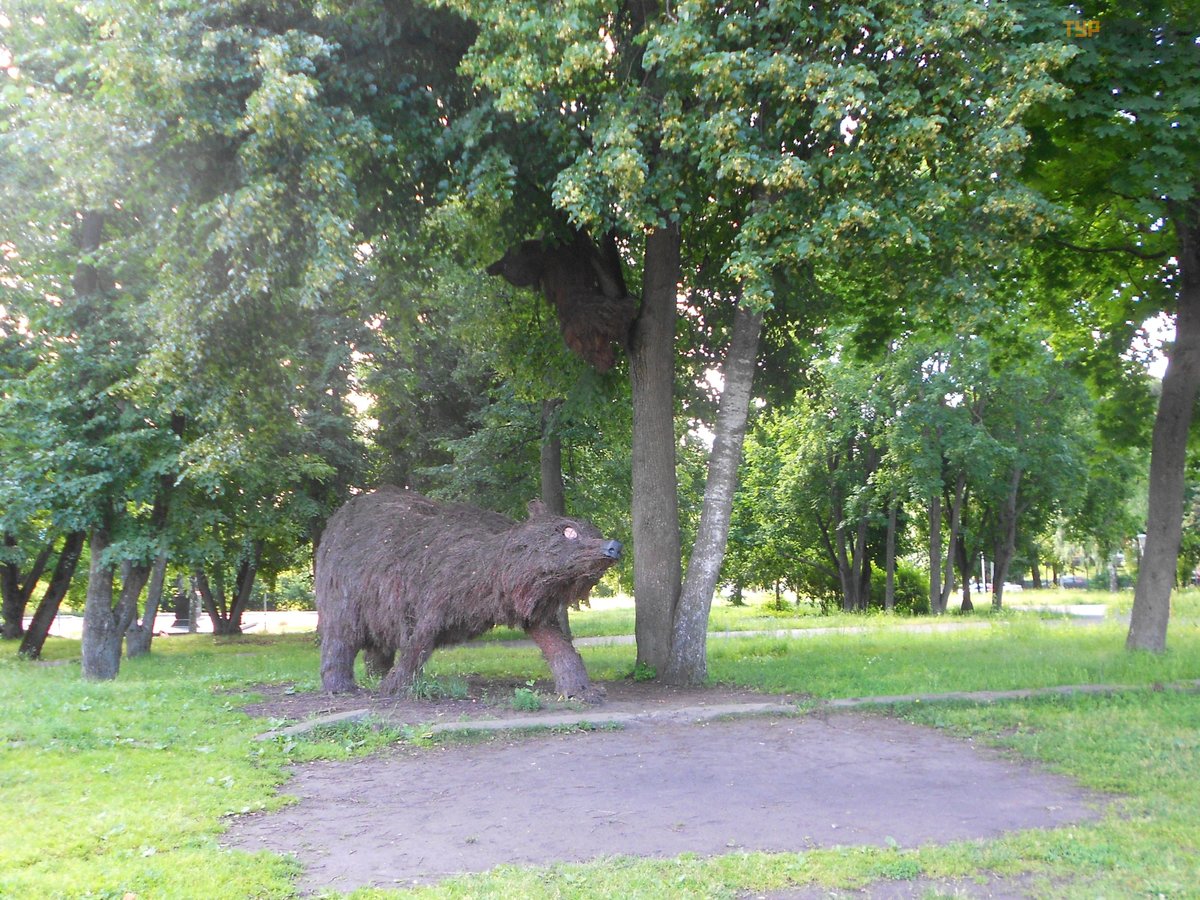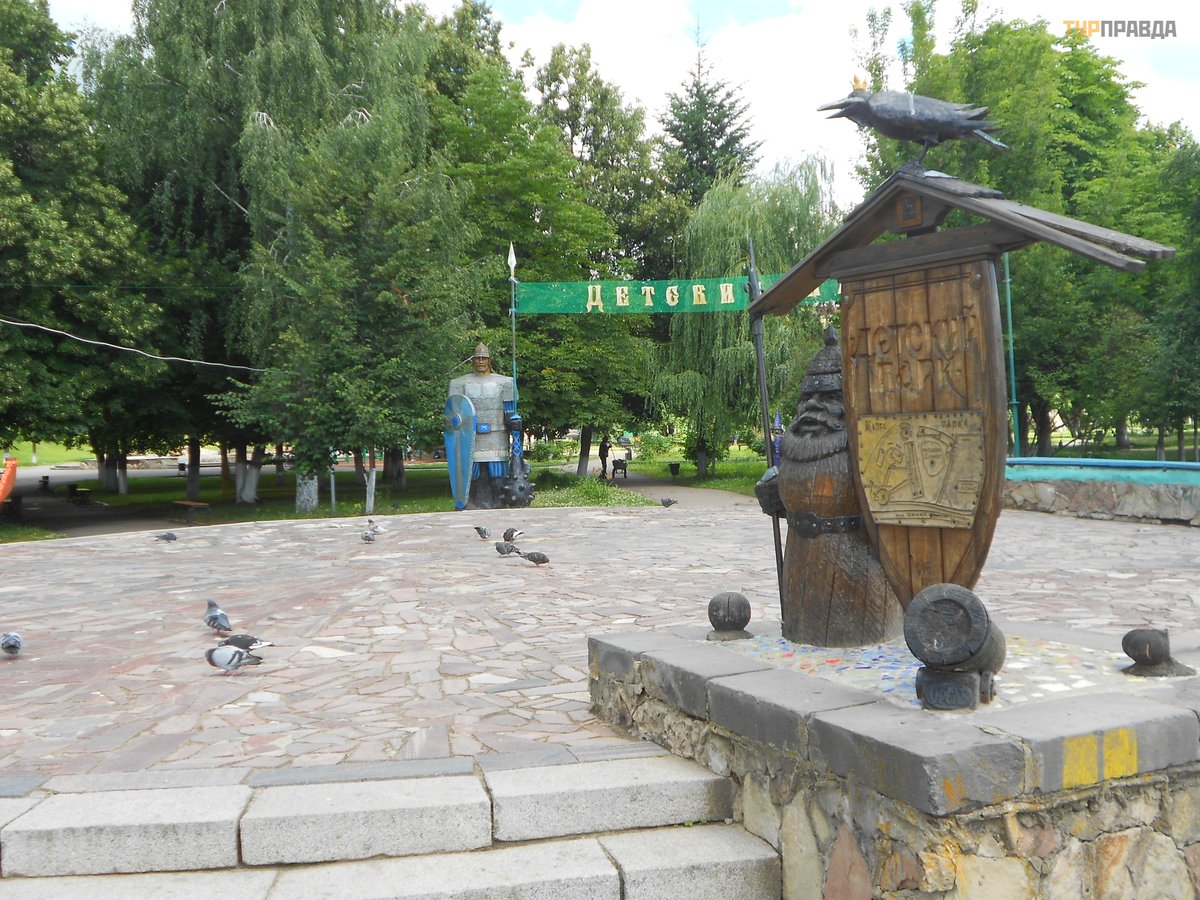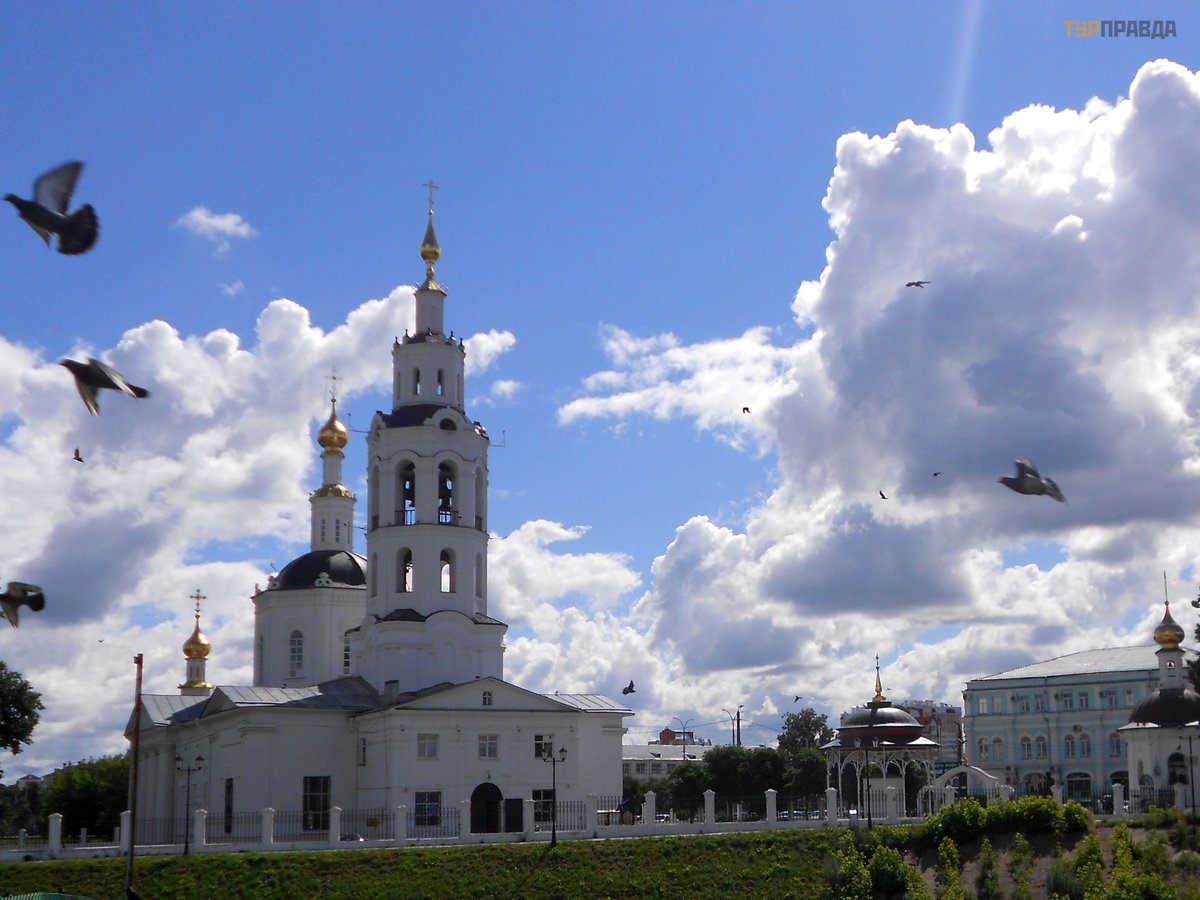The house I live in
Eagle? Where is it?
Is this a city?
I've heard this many times!
This is the city of the first salute! - more "advanced" will answer. And someone, having heard the pathetic speech of local officials, will loudly be called "the literary capital of Russia. " And I think everyone will be right.
For me, my city, first of all, is associated with something warm and dear. Not without reason, in the title of the story, I borrowed the phrase of the old Soviet film by Lev Kulidzhanov of 1957, which tells about people who have lived an entire era with their joys and tragedies.
Located on the routes from north to south and from west to east, the city seems to be stuck in the distant Soviet era. Here, as before, slogans “flaunt” on old buildings, once famous throughout the Union of factories,
and Lenin also, as before, points the way to a brighter future.
Urban planners are not aware of such elementary achievements of our time as a road junction, an additional traffic light arrow, a roundabout. And, as a result, very frequent traffic jams on both central and secondary roads. And new-build candles absurdly coexist with the private sector of the 20th century. But these little things, which are many in any other city.
The city was founded in 1566, when a fortress was built at the confluence of the Oka and Orlik rivers by decree of Tsar Ivan the Terrible to protect the southern borders of Russia.
According to one of the legends, when oaks were cut during construction, a majestic bird flew into the sky, seeing which they called the city. According to another version, the bird sat on the walls of the fortress under construction.
As for me, both versions are worthy of existence, and this symbol of the city is present not only on the coat of arms, but also as a symbolic attribute on various objects.
At the site of the founding of the city, in the colloquial use of local residents - an arrow, nothing reminds of history, only a stone with a memorable date in a small park.
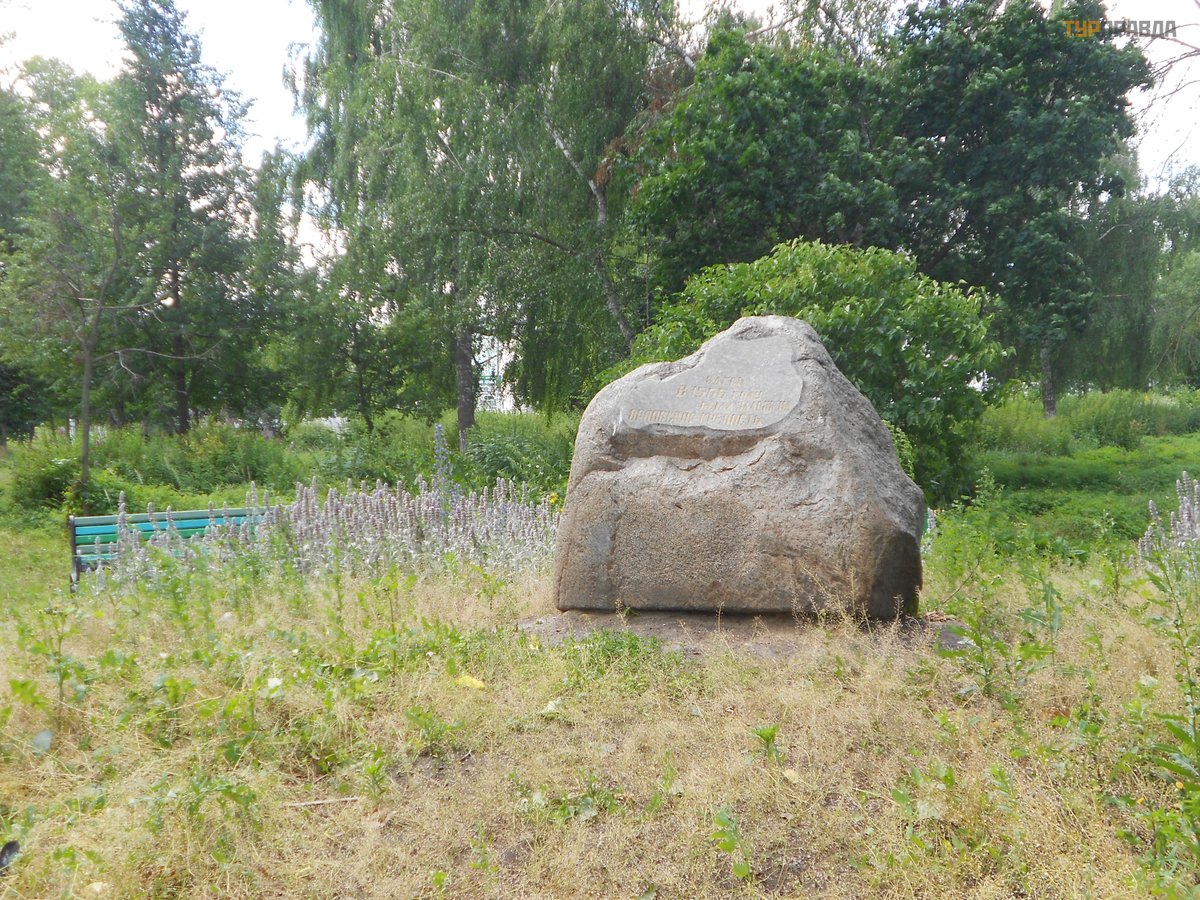 The stone at the site of the foundation of the Oryol fortress
The stone at the site of the foundation of the Oryol fortress
In 1966, a stele was erected here in honor of the 400th anniversary of the founding of the city.
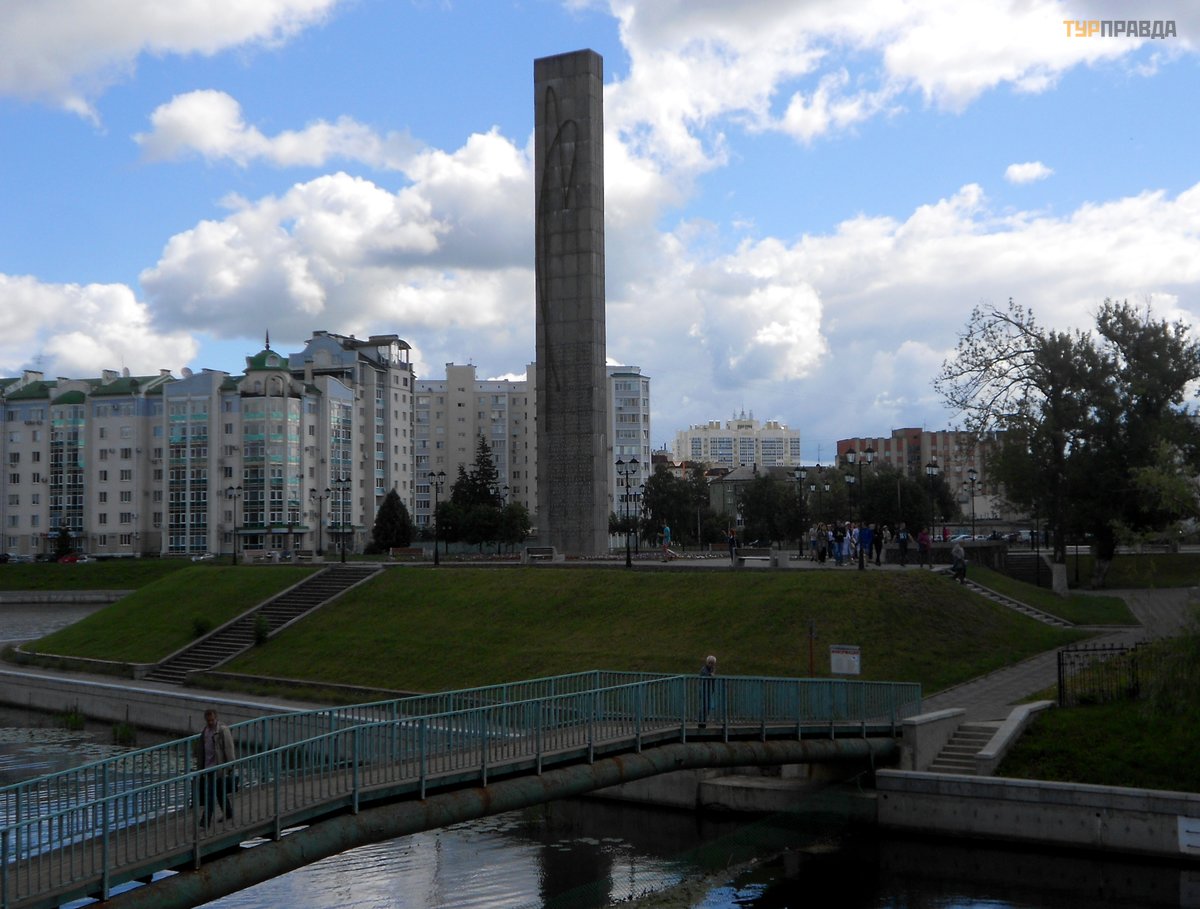 Stella at the site of the city's founding
Stella at the site of the city's founding
Last year, it's easy to calculate, the 450th date was celebrated. As a result, for some time the city turned into a continuous construction site. Unfortunately, the result of the “mastered” funds was not impressive.
The name of the literary capital as a laudable epithet did not appear by chance. Over the years, such prominent literary figures as I.
Bunin, N. Leskov, I. Turgenev, A. Fet, L. Andreev and others.
For a nominal fee, you can visit the house-museums of some of them. Each native Orlovet in his school and student years touched the history of his native land as part of organized excursions. And a trip to I. Turgenev's family estate in Spasskoe-Lutovinovo has always been part of the compulsory program for schoolchildren.
One of the places of the Eagle, mentioned in the works of I. Turgenev and I. Bunin, became the Noble Nest, a small area on the high bank of the river. Orlik. Nearby is the Leskovs' house, where the future little writer spent his childhood. There is also the House of Writers, the museum of N. Leskov.
And if you walk a little more towards Turgenev Street, you will stumble upon the Museum of Oryol Writers, and in the adjoining Georgievsky Lane - the Museum of I. Bunin. In general, this whole cozy area with museums, houses of writers, diluted with stupid buildings of the Soviet era, reminded me very much of the Trinity Suburb in Minsk, only Belarusians treated their history much more respectfully.
The Orel Public Library bears the name of I. Bunin, where students drew knowledge during the absence of the Internet, including me.
In addition to well-known writers, a well-known explorer, a member of polar expeditions to Novaya Zemlya and Svalbard, V. Rusanov, was born in Orel. You can learn more about his life in the Rusanov Museum on the street of the same name.
Also, in the Oryol province, N.
Polikarpov, who later studied at the Orel Seminary and became a famous aircraft designer who created the famous U-2, I-15, I-180.
Walking along M. Gorky Street past the City Park (founded in 1823), we will see the Assumption Monastery. In this connection, this part of the city was popularly called Monastyrka.
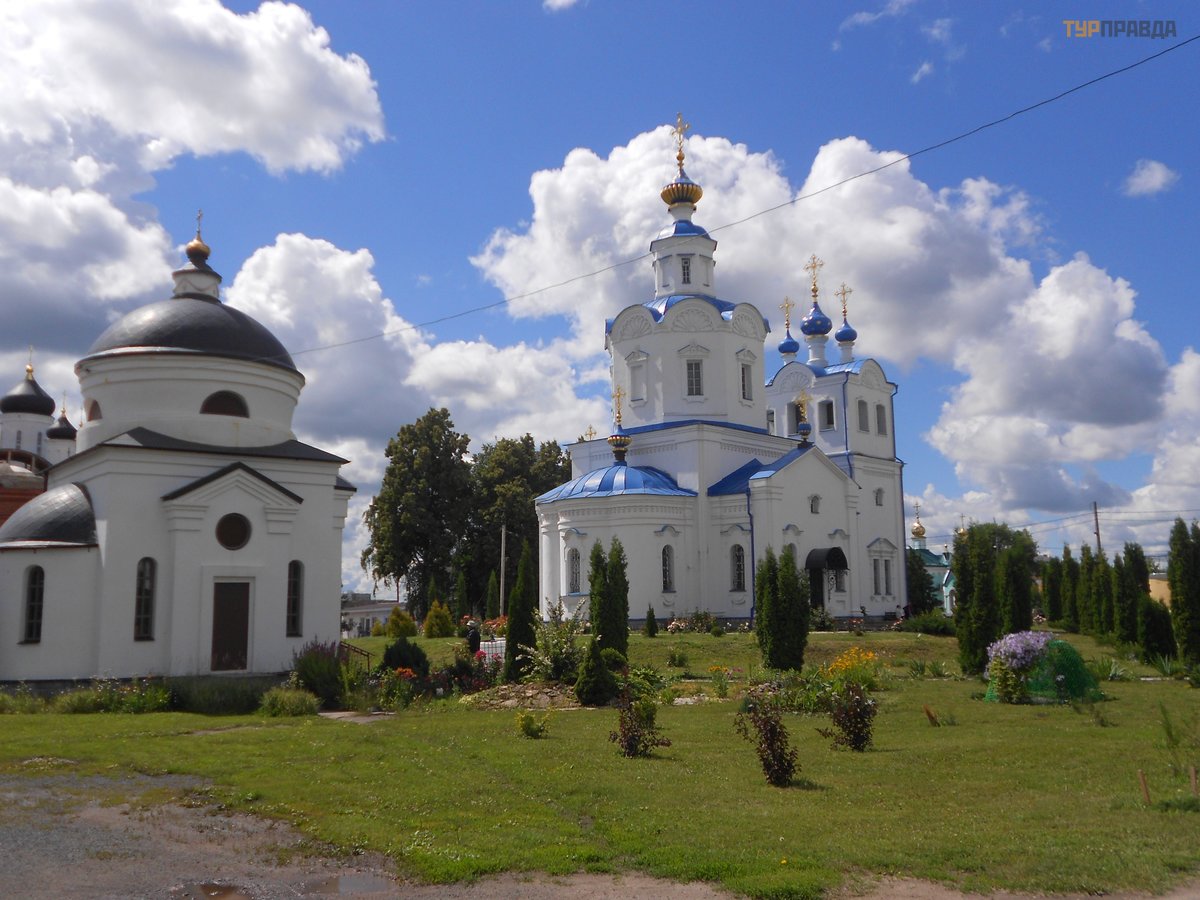 The territory of the monastery
The territory of the monastery
And if you go down from the City Park to the river. Oke on a wide concrete staircase, you can get to a small city beach.
Here, from the boat station, the water tram makes its rare voyages along the river.
The central square of the city is Lenin Square, surrounded by the Regional Administration, the Oryol Drama Theater, the building of the Main Post Office.
The pedestrian street Lenina (former Bolkhovskaya) begins from it with numerous shops and souvenir shops and cafes.
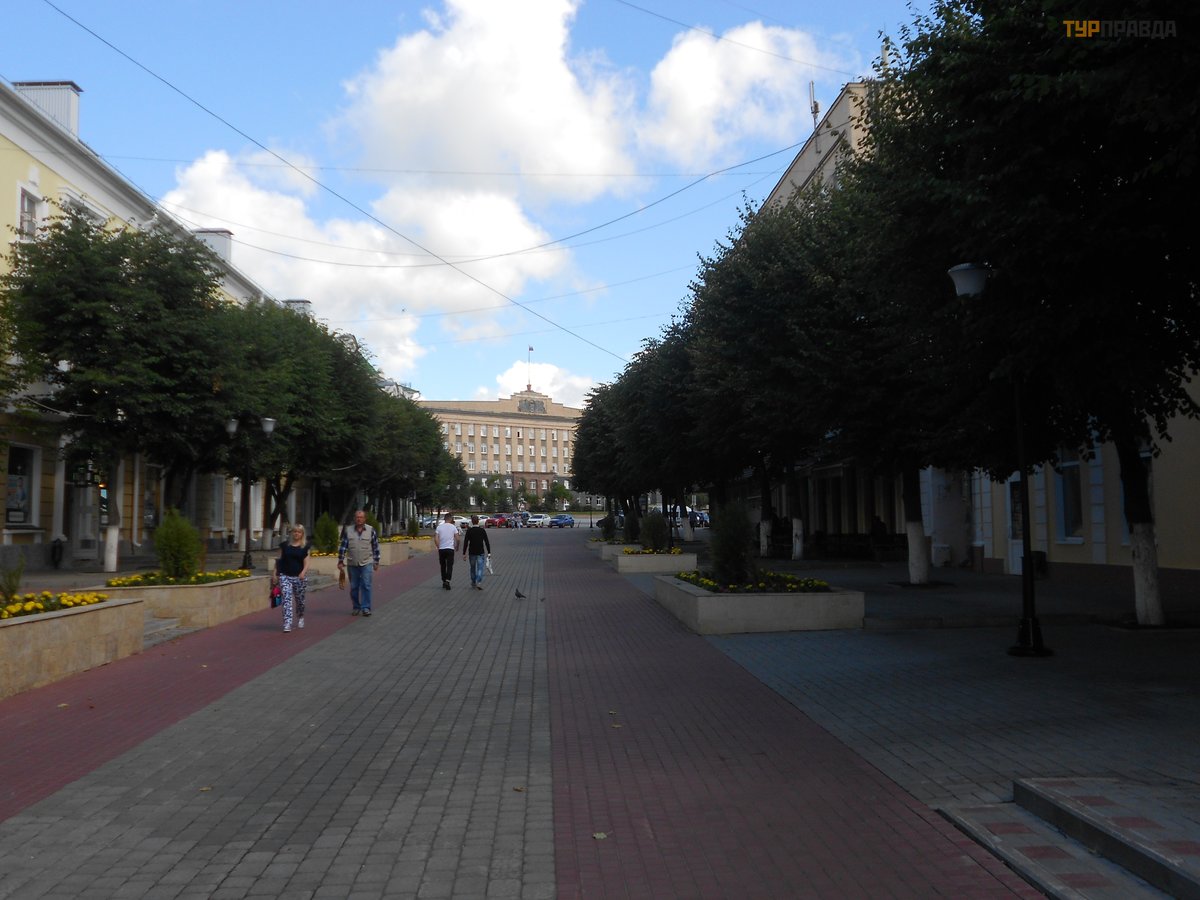 st. Lenin. Pedestrian area of the city
st. Lenin. Pedestrian area of the city
Like many years ago, dates are arranged here, wedding photo shoots are held, guests and residents of the city are leisurely walking around. The central part of the street remembers the trams that used to run here, and its foundation was laid with paving stones by German prisoners of war in the post-war years.
Going down Lenin Street across the Alexander Bridge, we will get to the square where a monument to General A. Yermolov, the hero of the Patriotic War of 1812, who lived in our city, is erected.
Opposite the square, one of the oldest buildings in Orel, the former Oryol Gymnasium, where N. Leskov and L. Andreev studied at different times, P. Stolypin received his first education from 1878 to 1881.
In 1917, the poet S. Yesenin came to the house located next to my place of residence on Komsomolskaya (formerly Kromskaya) Street. The parents of his wife Z. Reich lived in this house. Blurred images of childhood recreate in the mind a one-story wooden house, which is currently not preserved. And in its place is a "masterpiece" of the post-perestroika period that does not even deserve your attention.
Also, one of the iconic places of the city is an architectural complex on the square near the railway station.
For many years, Oryol was an important junction that connected various directions, "freight trains" and passenger trains went through it in an endless stream.
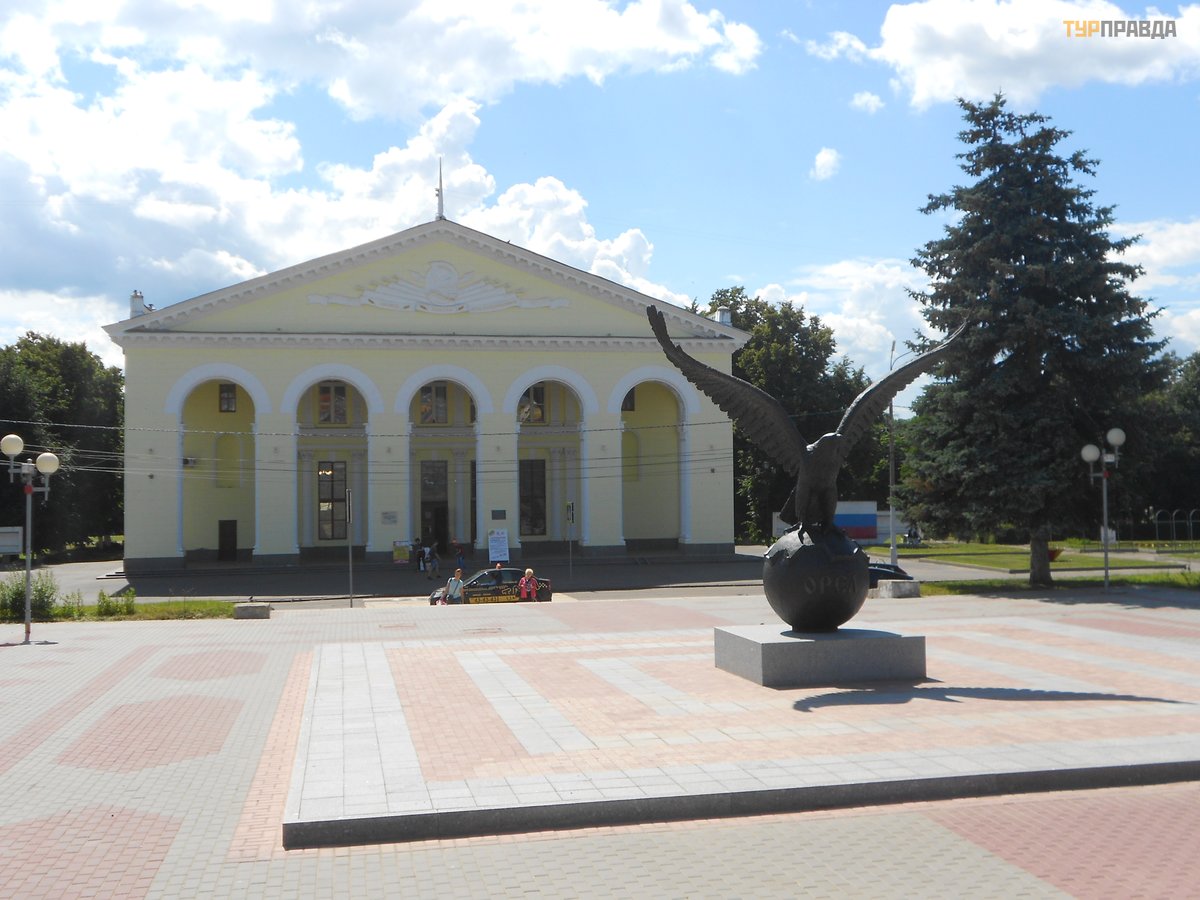 The symbol of the city against the background of the building of the Palace of Culture of the Railwaymen
The symbol of the city against the background of the building of the Palace of Culture of the Railwaymen
Often, as a child, returning on a train with my parents from some trips, I would look out the window, trying to make out familiar buildings. Or he ran to meet his parents at the station across the tracks (they lived not far from the station then) after their next voyage to Moscow for sausage or Kharkov for knitwear and sweets. Here he accompanied his classmates to the flight school. Therefore, for me personally, it is the station that is associated with a warm feeling for the city.
The facade of the station is decorated with a clock from the Oryol plant "Yantar", which once "rattled throughout the entire Union.
Surely, many somewhere in the country or in the garage will find an old dusty clock of the former Oryol watch factory.
August 5 is the day of the liberation of Orel from the Nazis. During the occupation and during the liberation, the city was badly damaged. A few buildings only survived and were not destroyed to the ground.
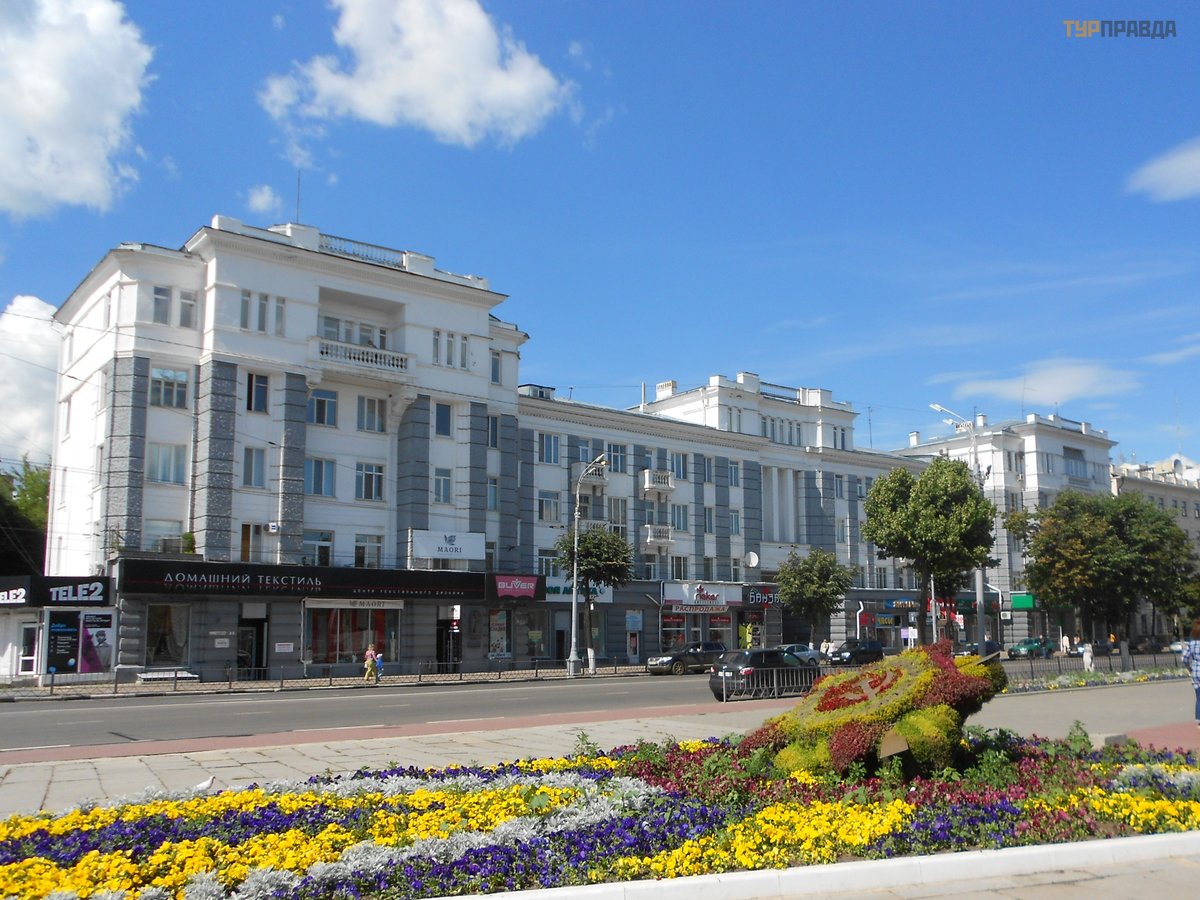 One of the few surviving buildings of the city, on which the Banner of Victory was raised in 1943< /small>
One of the few surviving buildings of the city, on which the Banner of Victory was raised in 1943< /small>
This day is considered City Day. To commemorate this, various festive events are held in the city, and the festive fireworks crowns everything. My daughter, who was born on this day, knows that there will always be fireworks on her birthday. The only time we did not spend this day in Orel was due to a trip with friends to Odessa in 2012.
Another main attraction of the city is the Square of Tankers, located on Peace Square.
It was founded in 1920 on the former Ilyinskaya Square, the site of public executions in pre-revolutionary Russia. After the liberation of the city in 1943, it was named after the tankers who took part in this operation. In summer, during the heat, it is especially pleasant to sit in the shade of trees under the sound of wheels of a passing tram, looking at passers-by or reading a newspaper.
Our friends and relatives from other regions, who visited us at different times, marked Oryol as a green city. And it's true, there are a lot of squares and parks. And although most of them are in a not very well-maintained condition, the natural lungs of the city are vast.
Tired of daytime walks or just spend the evening in one of the restaurants or cafes. As in any city, there are a lot of them, and it is difficult for a casual guest to navigate. My preferences are based on personal experience, as well as the opinion of friends and acquaintances: the Riviera restaurant is a cozy restaurant in Italian style, good cuisine from a foreign chef; restaurant Pelmenoff - a place that was once visited by John Warren, the host of "Let's Eat - Let's Eat"; brasserie Chester; Cofeedim is a cafe where not only coffee and sweets; gastropub Kakhovka is an institution that quickly gained popularity among young people.
I would like to finish my story about my hometown with the words of a movie hero of a famous movie:
- You will be with us in Kolyma ...
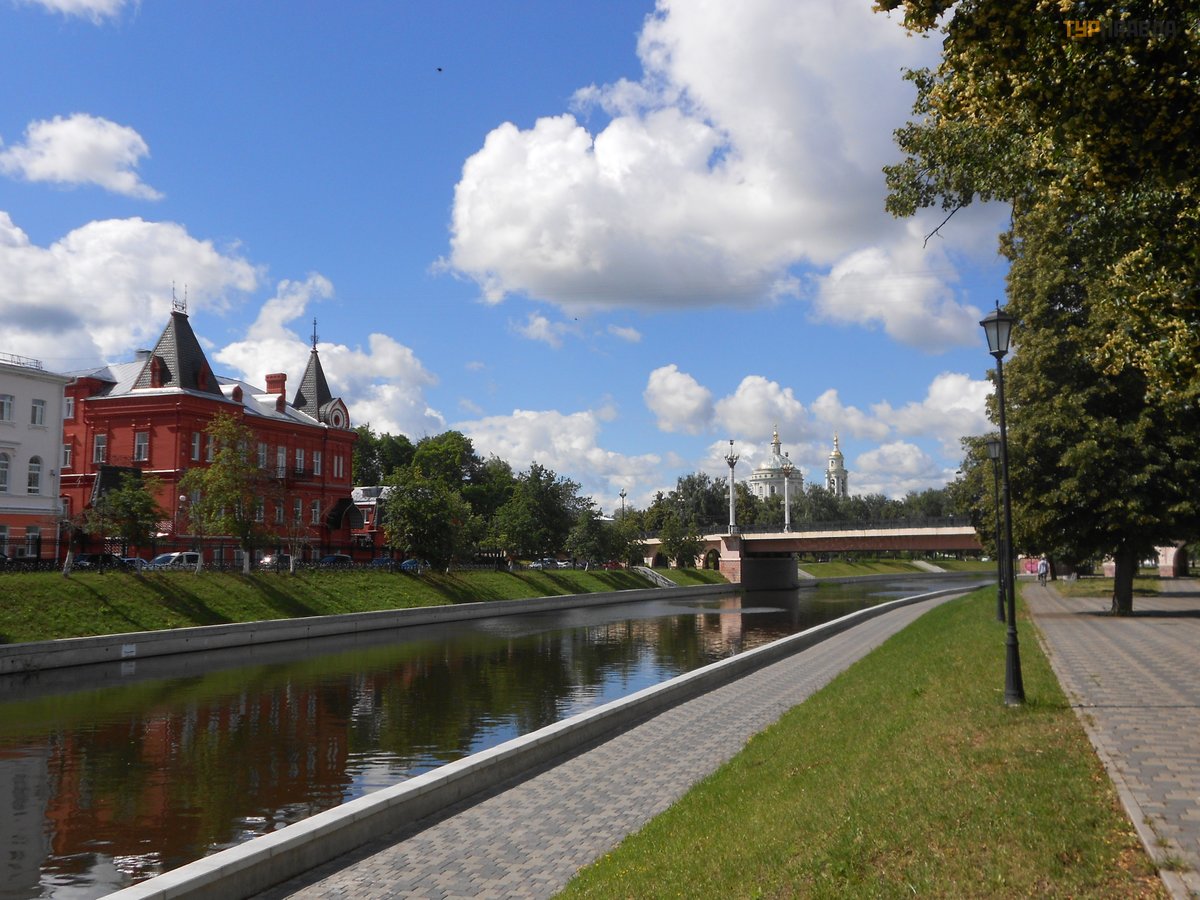 р. Orlik. View of the Alexander Bridge and the building of the Central Bank
р. Orlik. View of the Alexander Bridge and the building of the Central Bank
Link to a review of Orel sights - Saburovskaya Fortress
